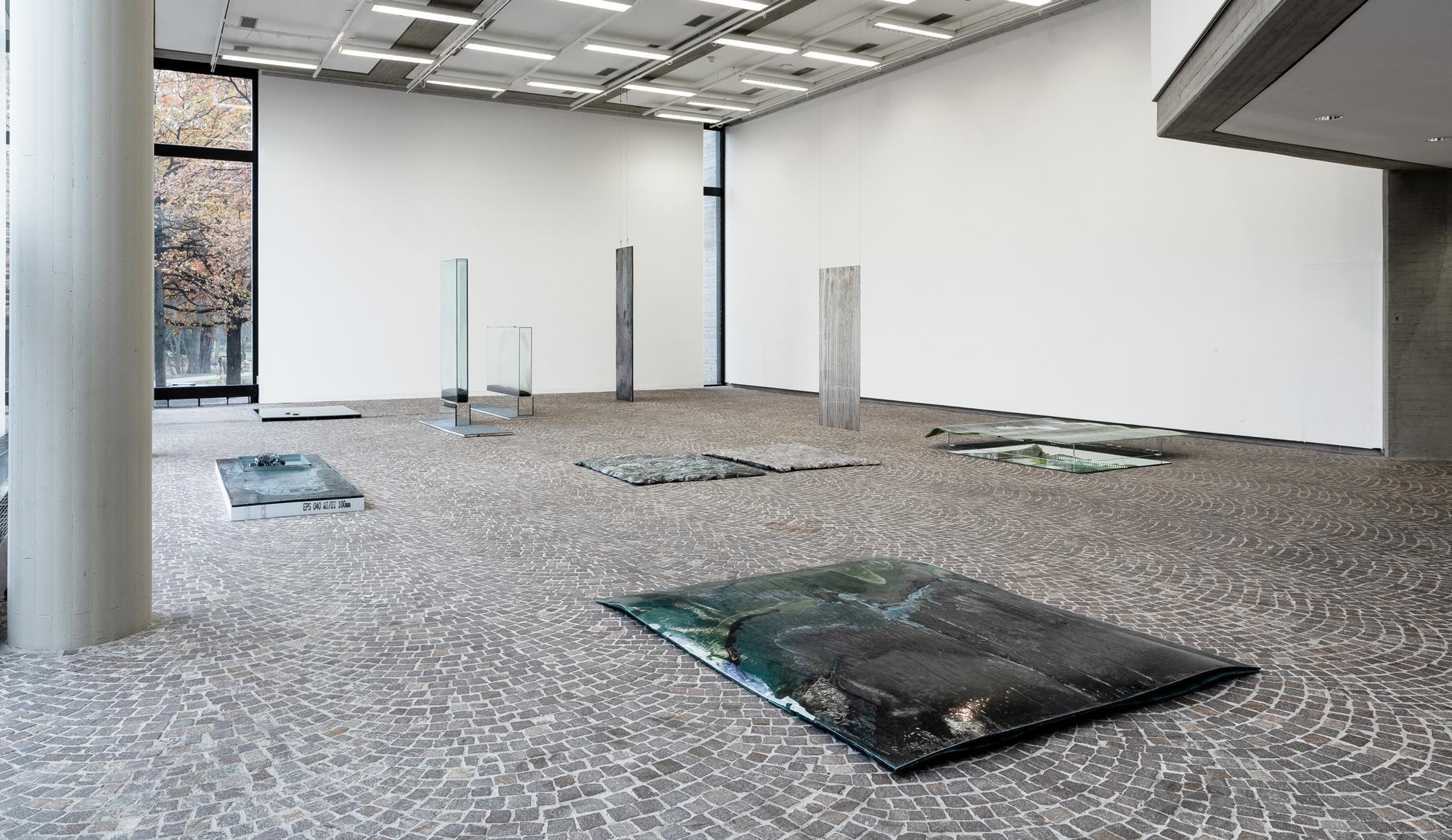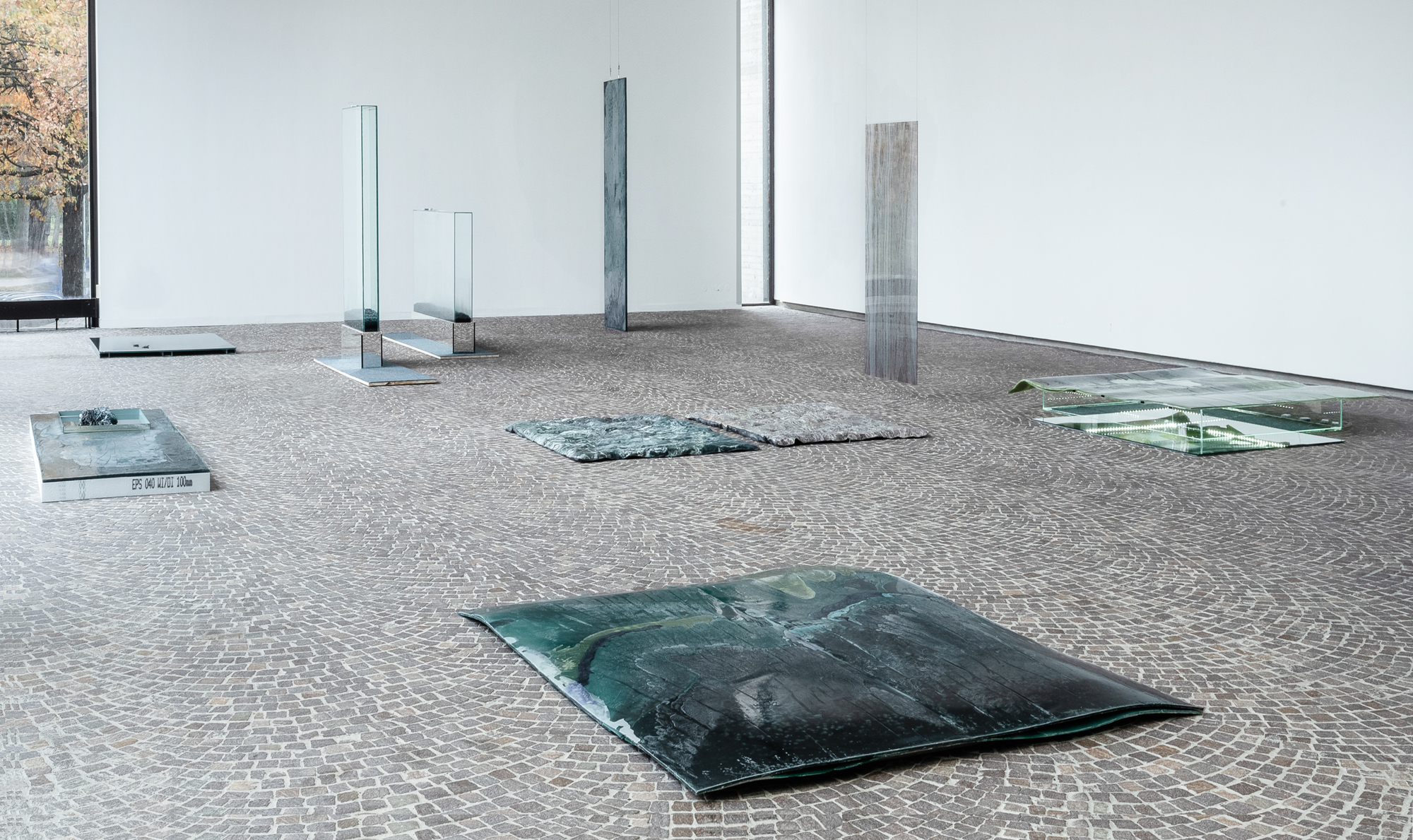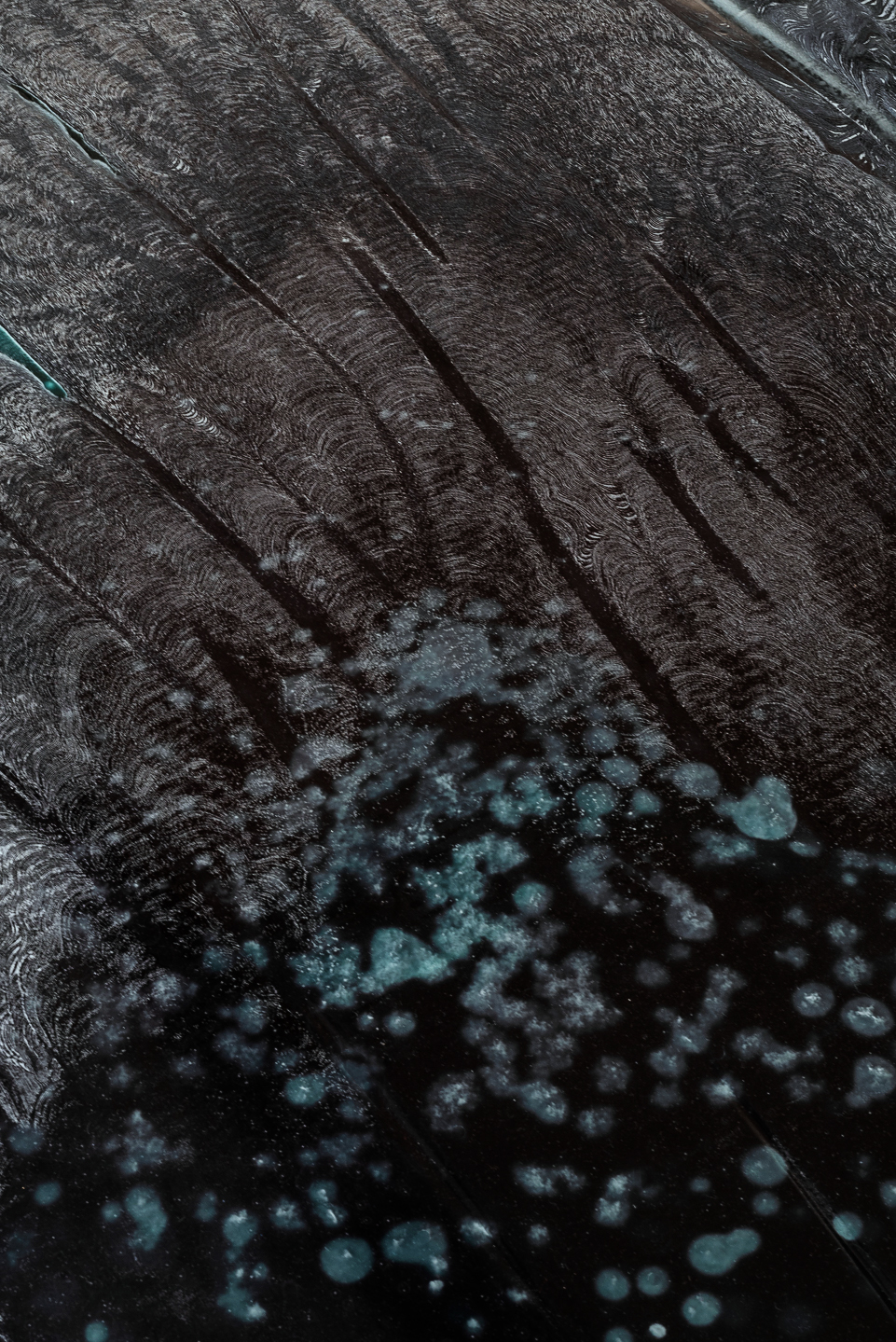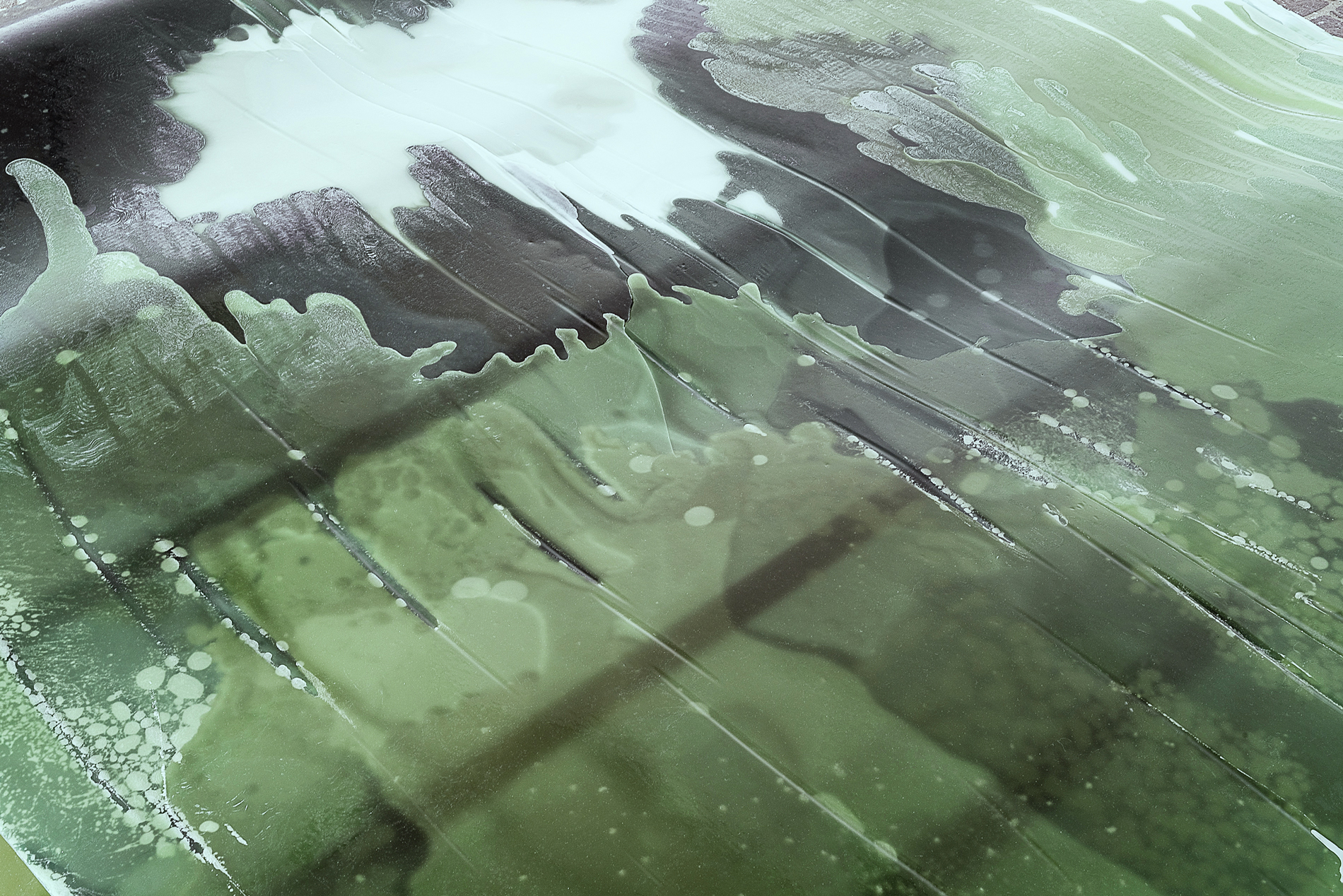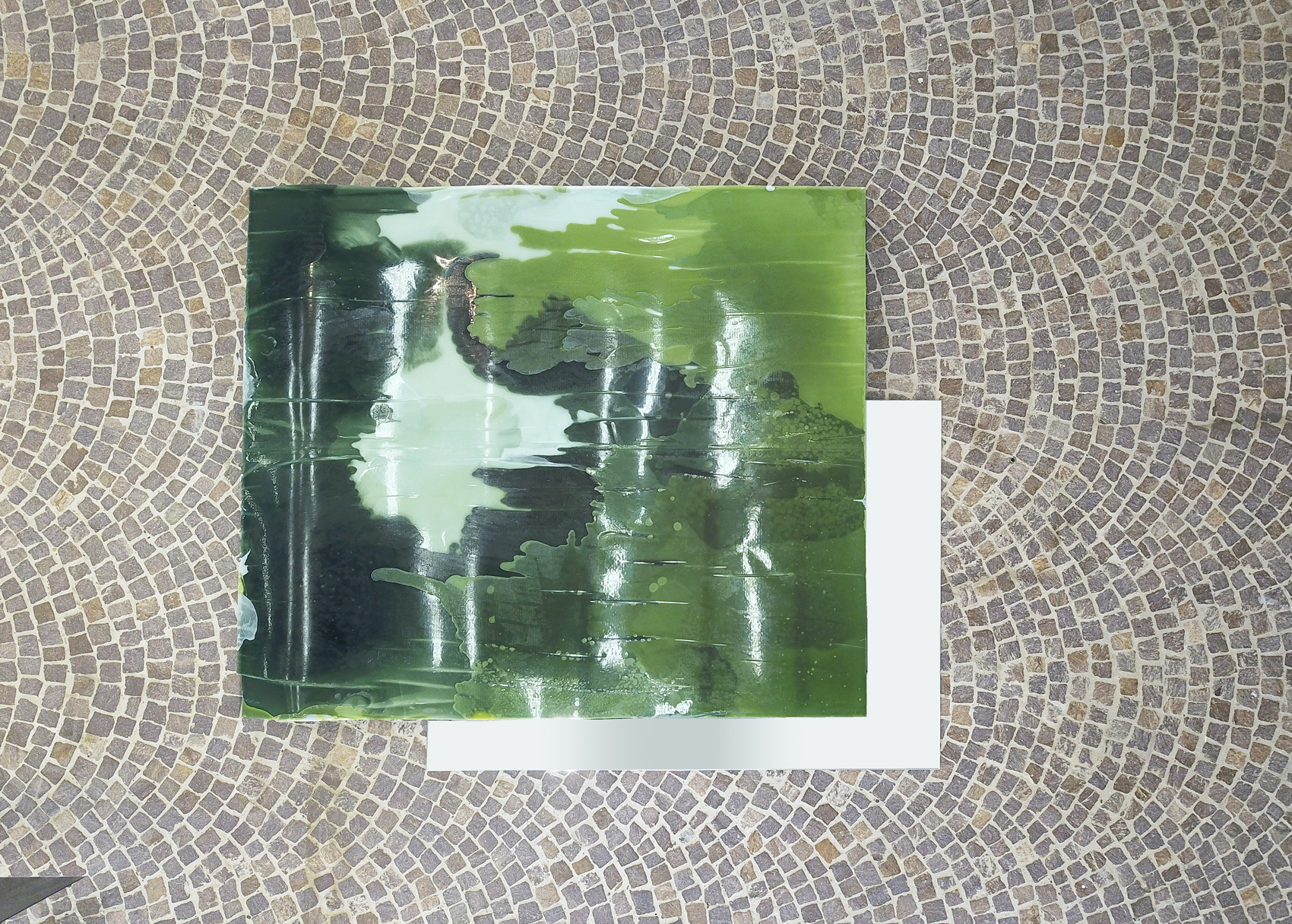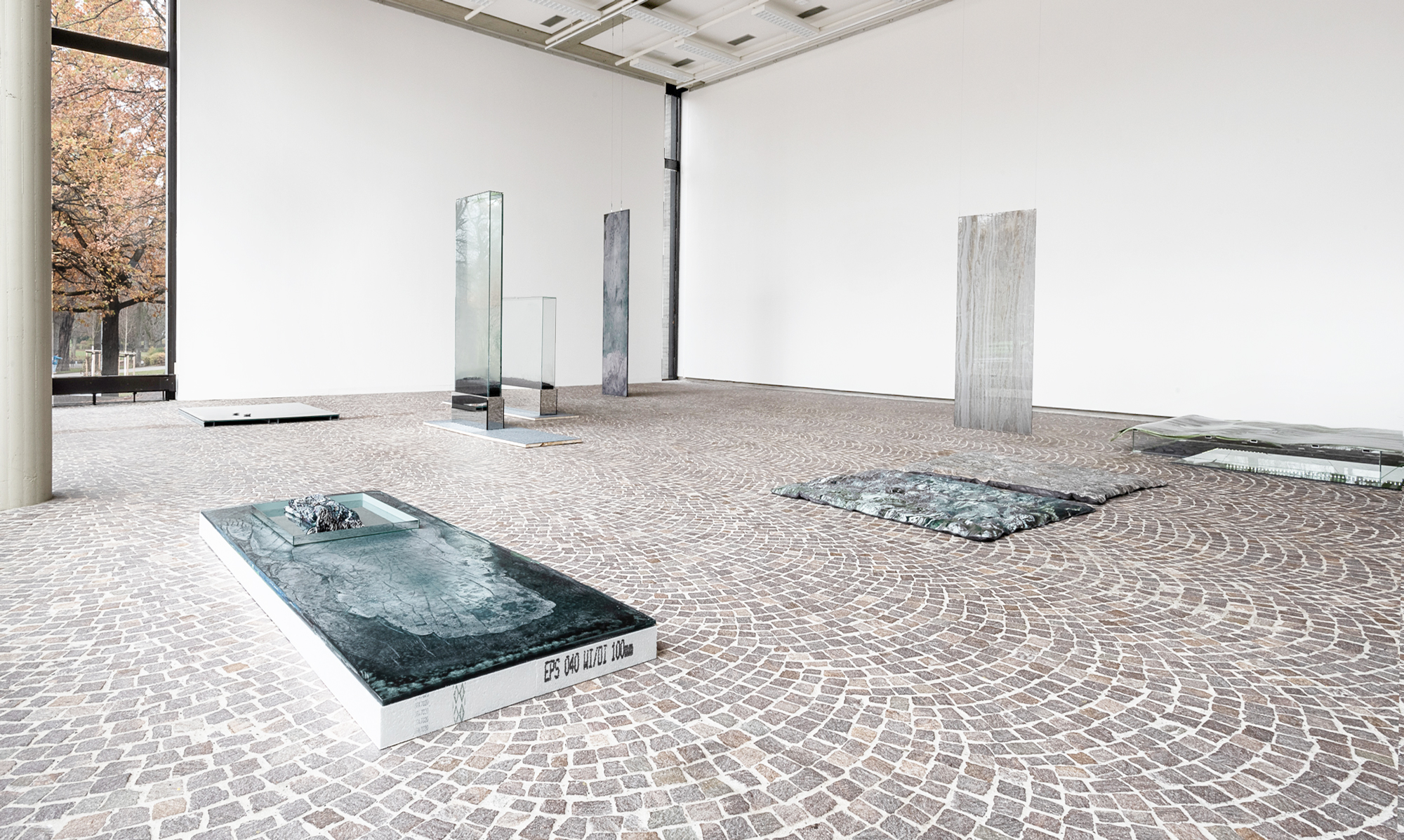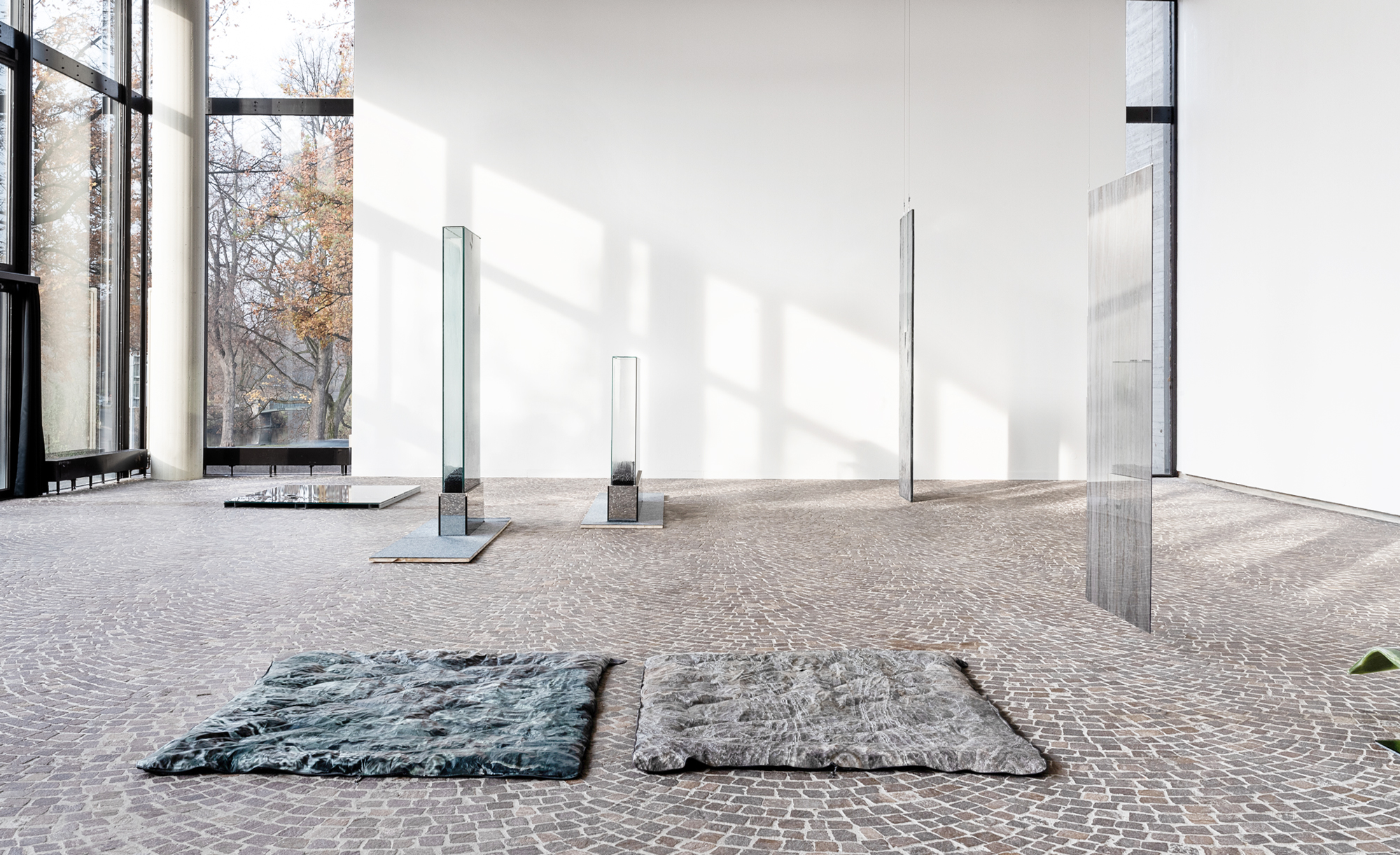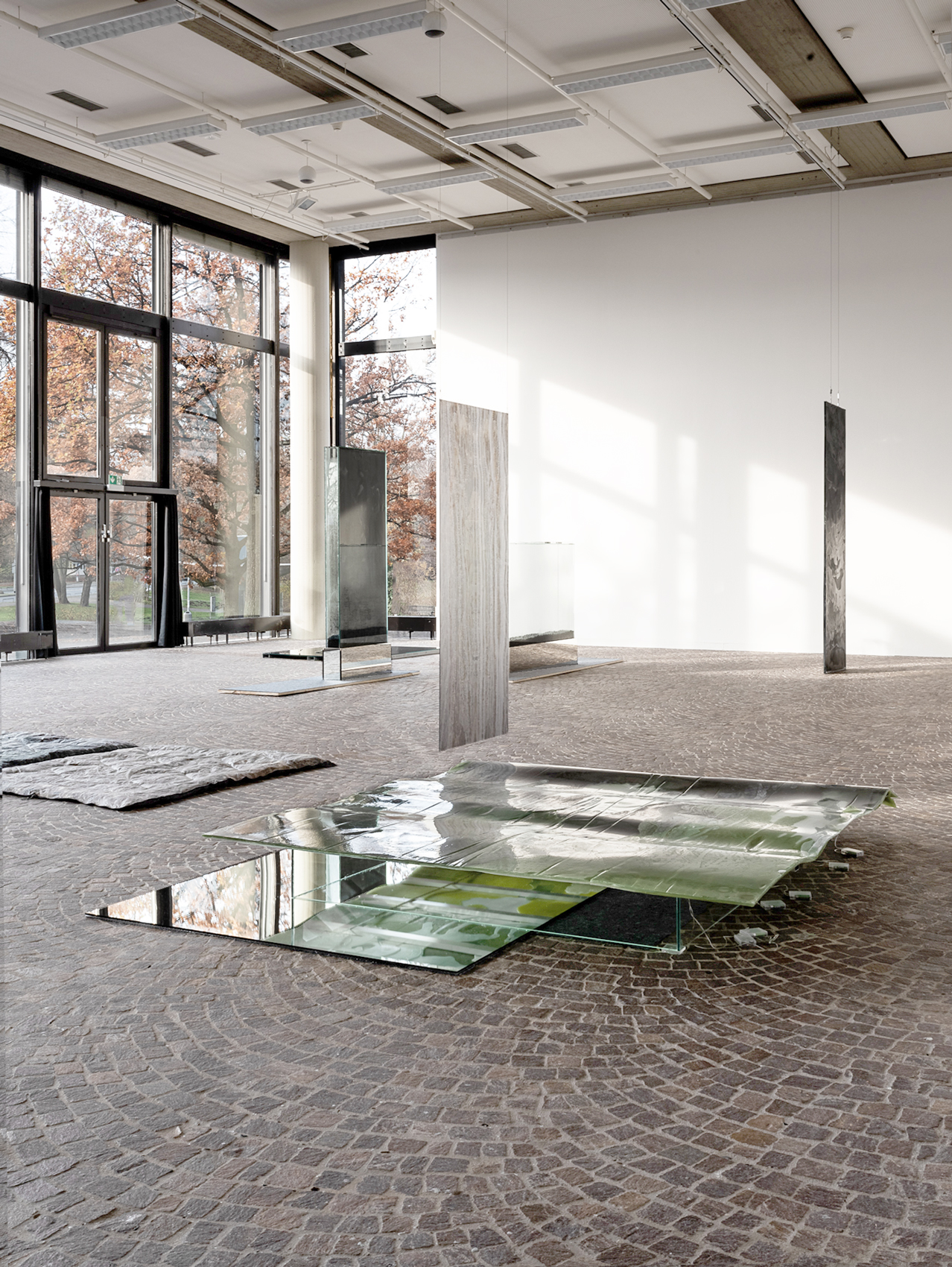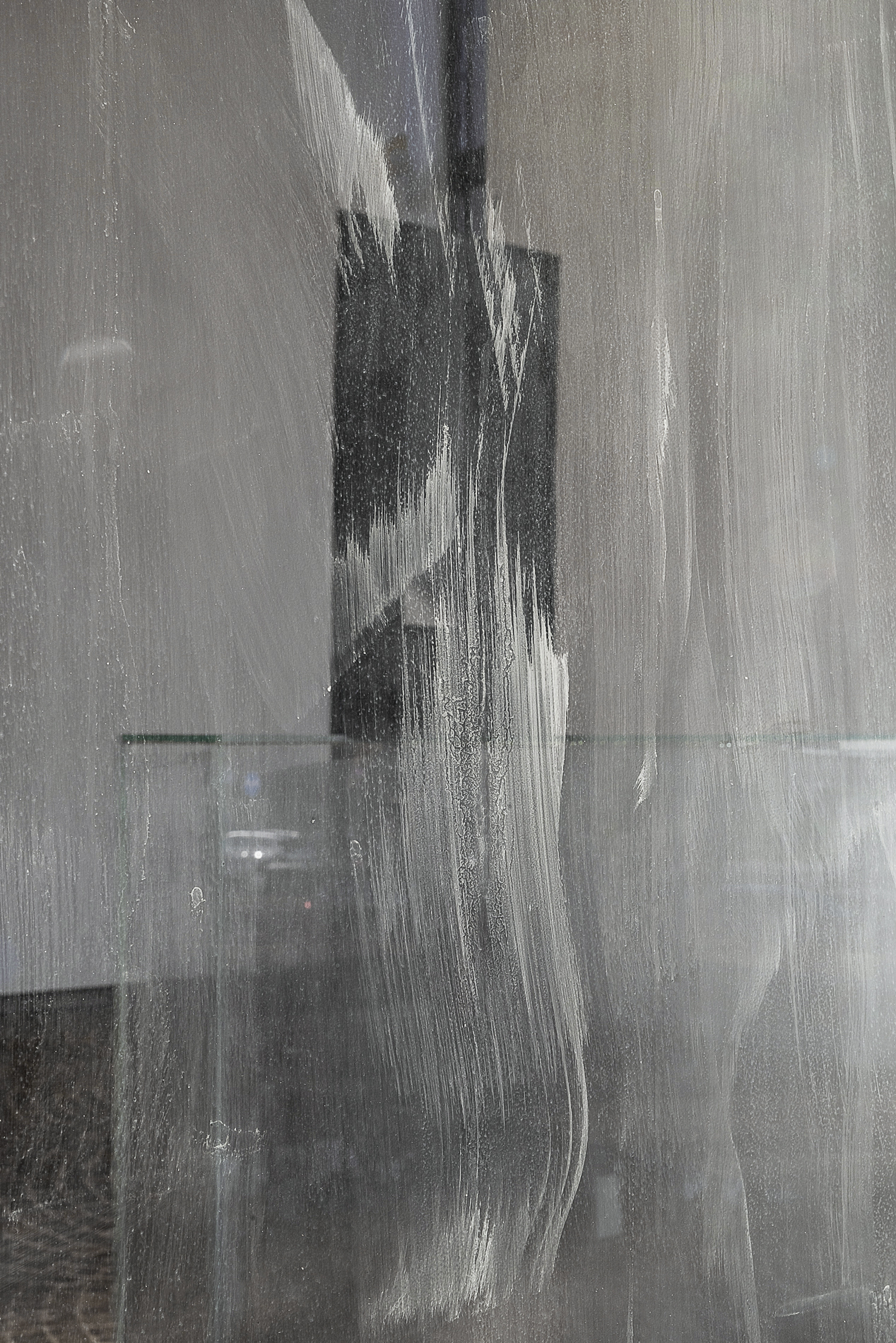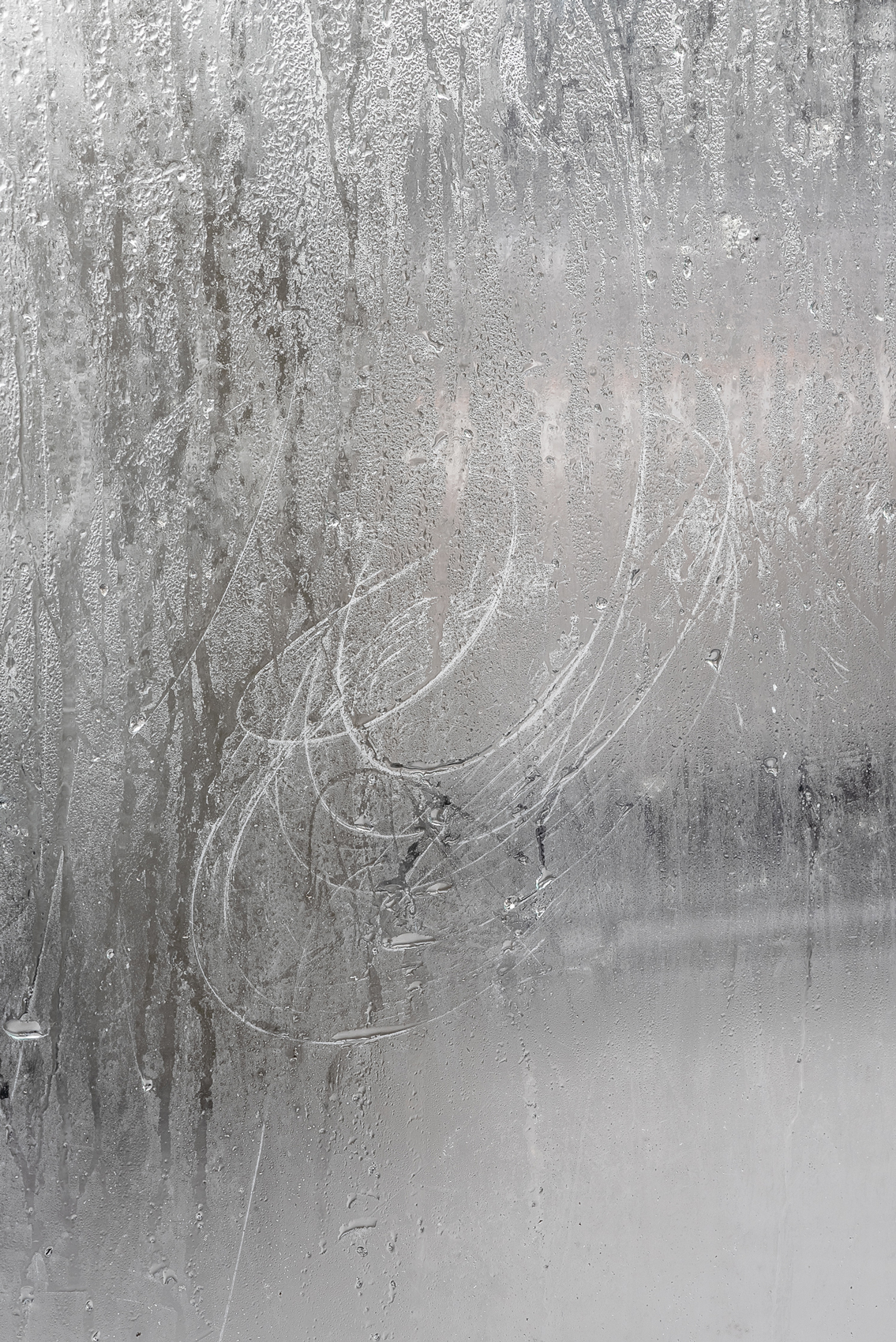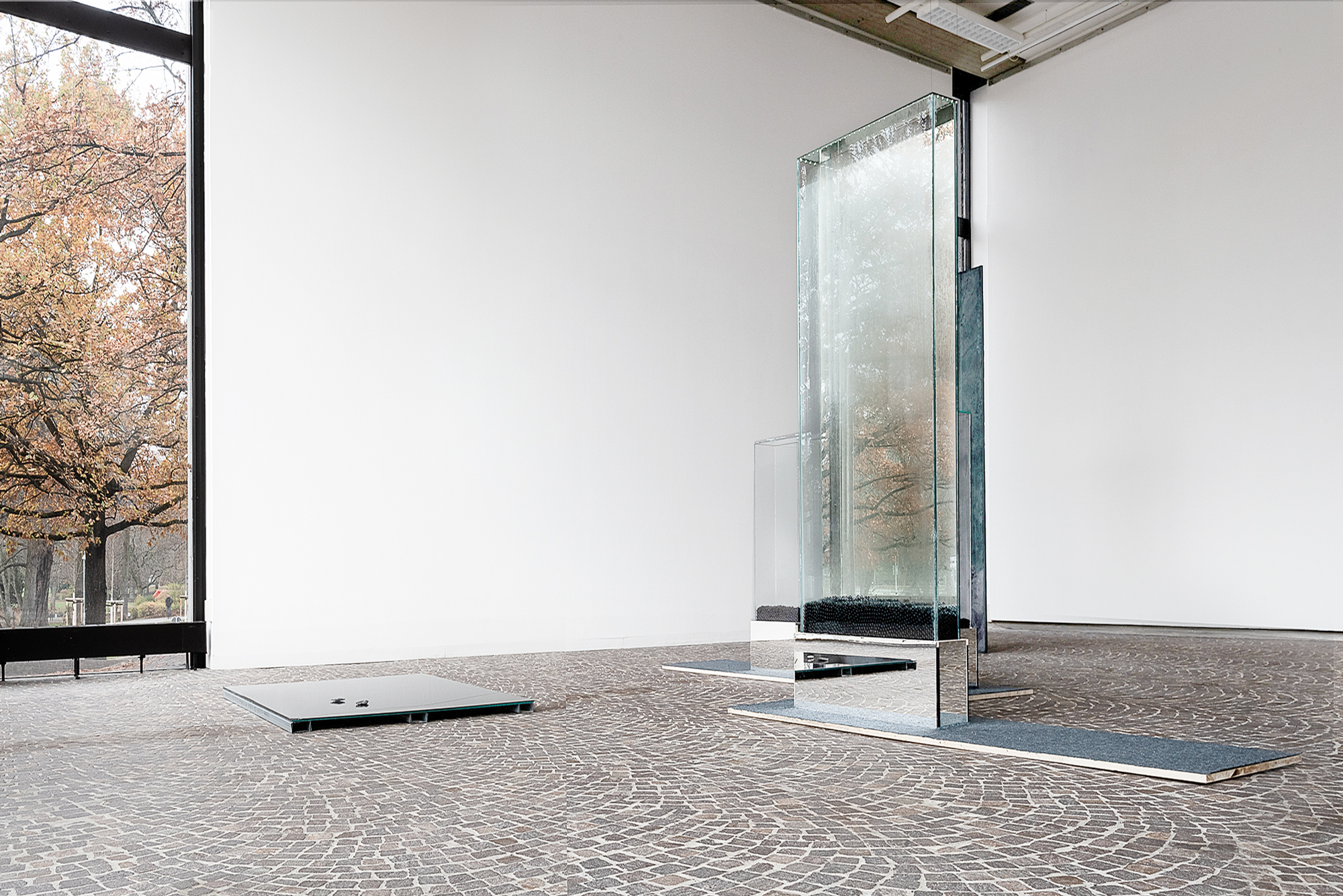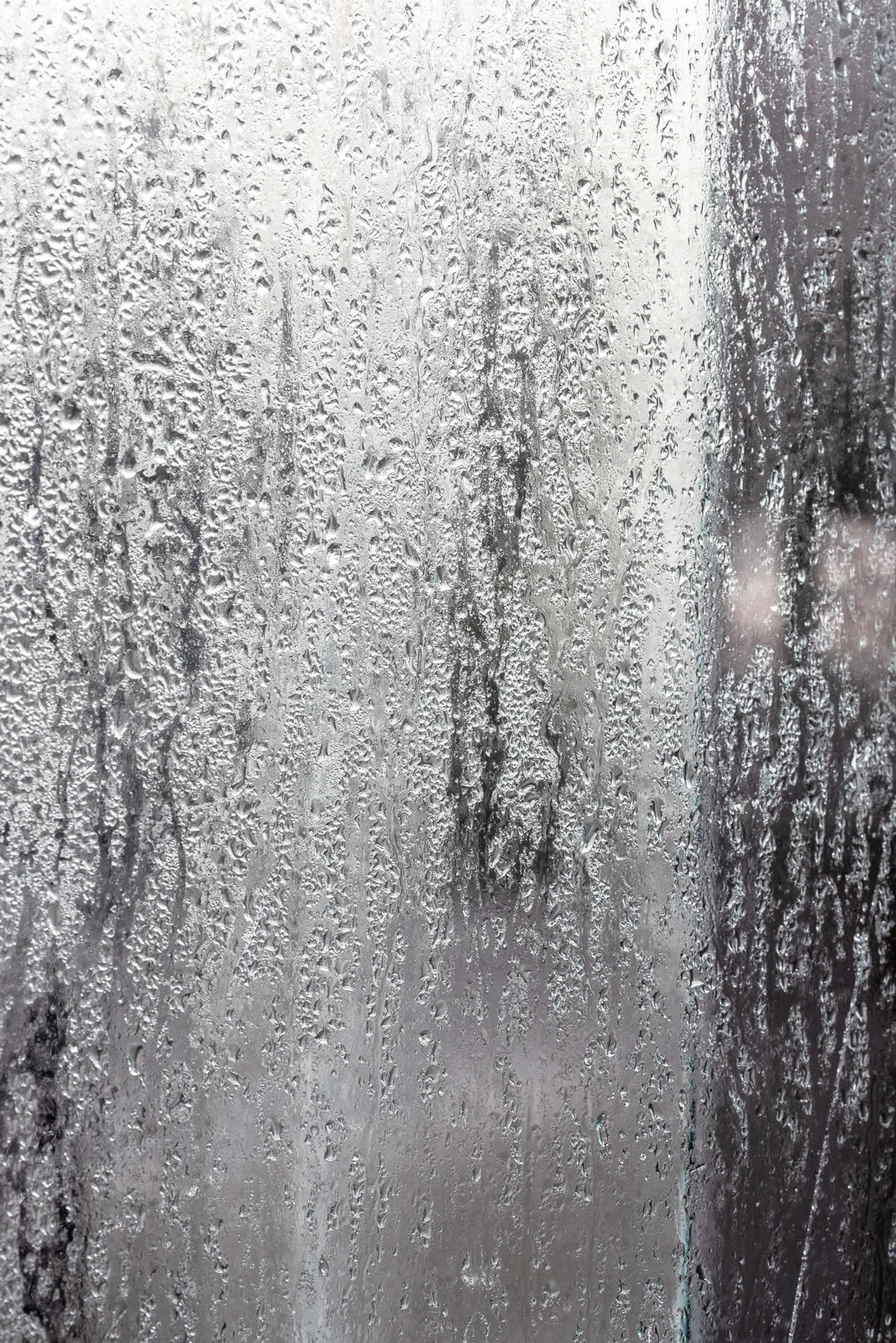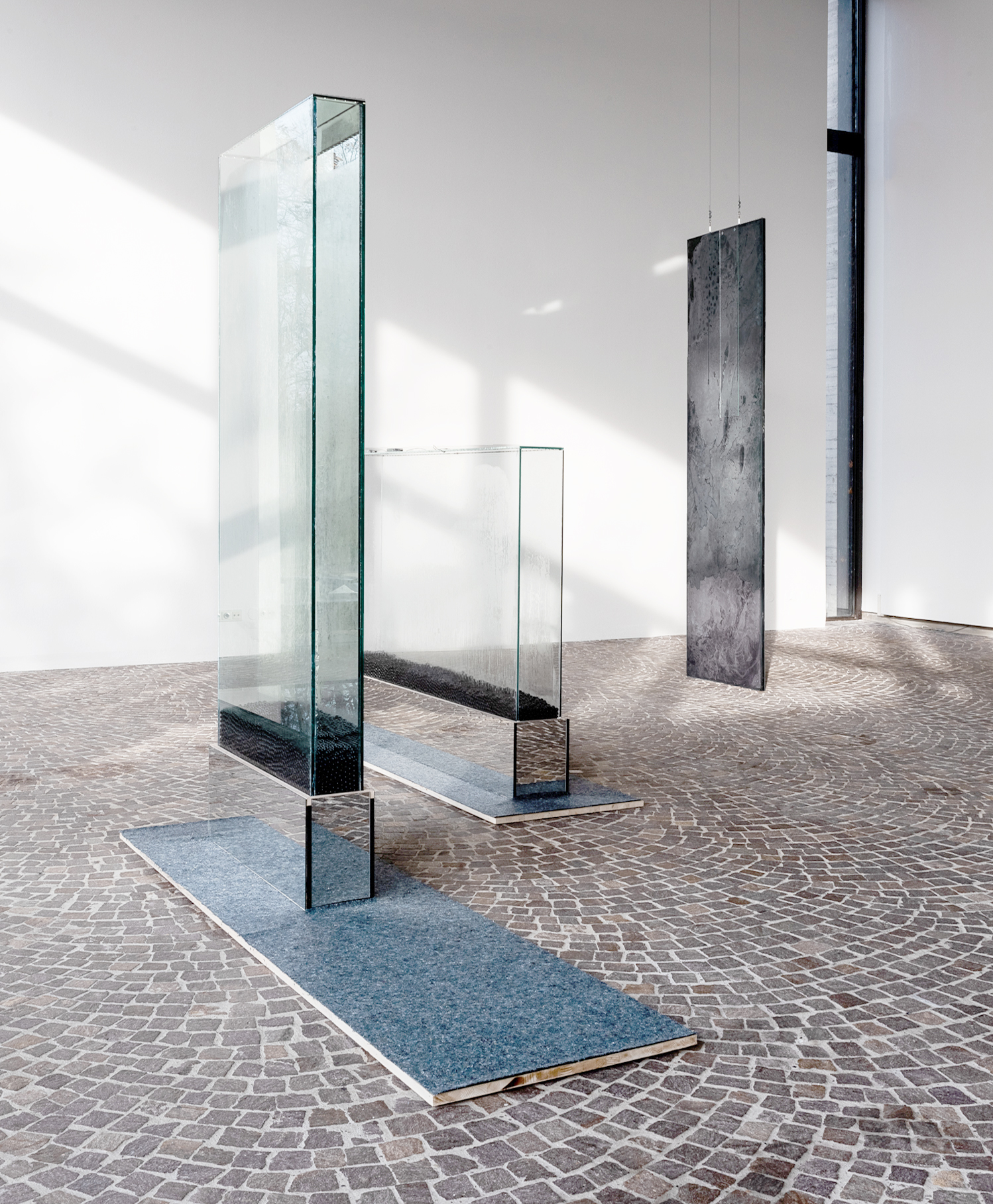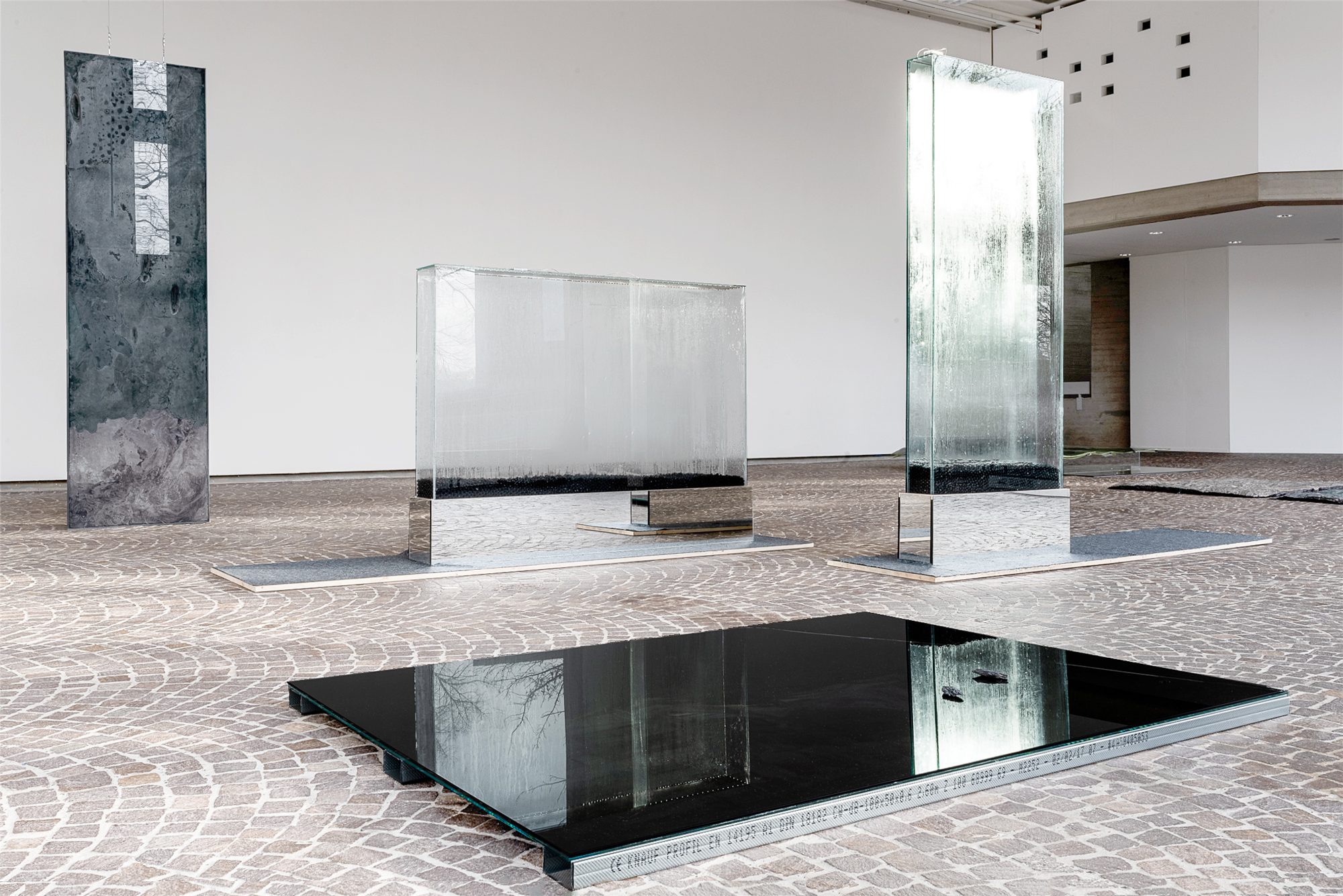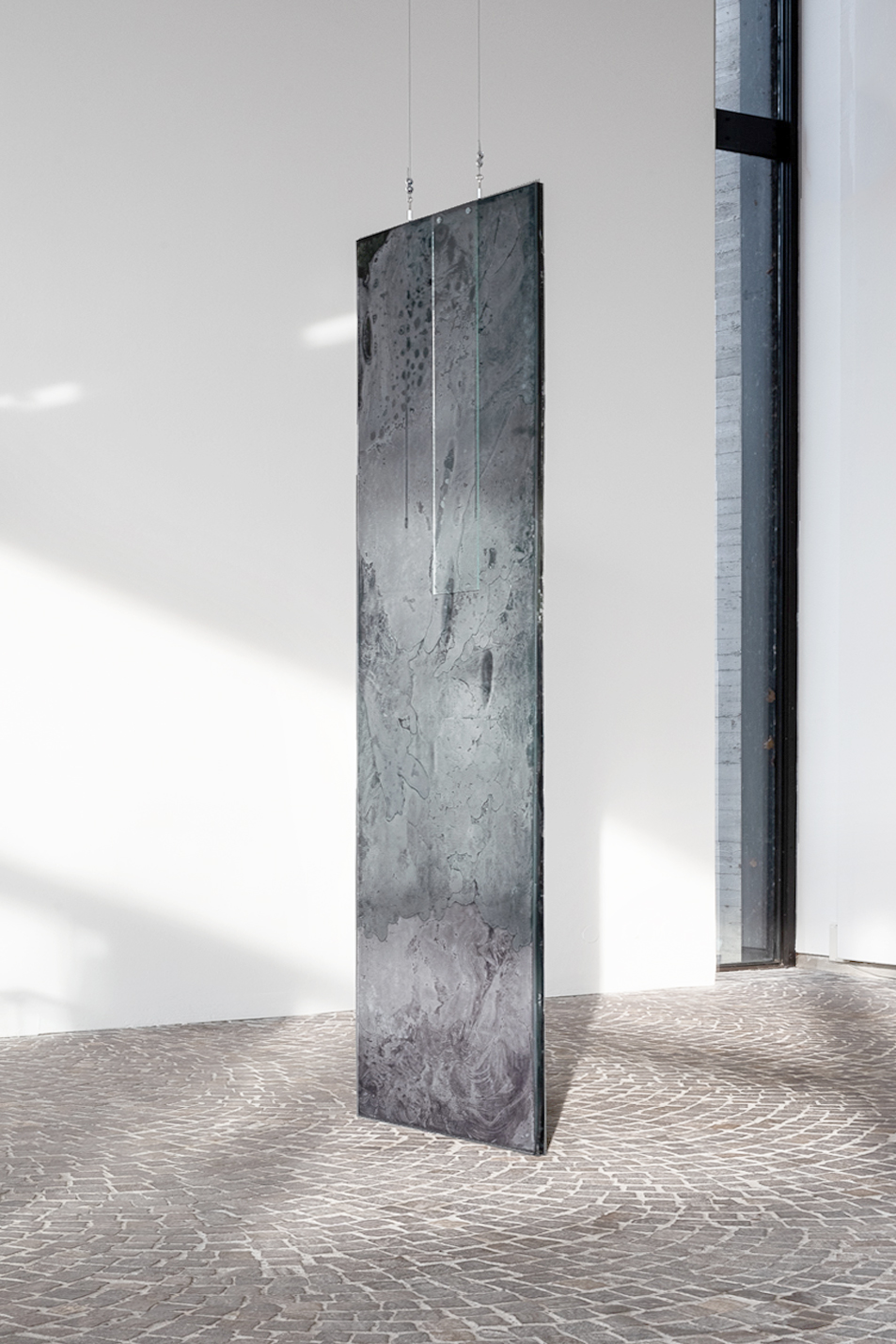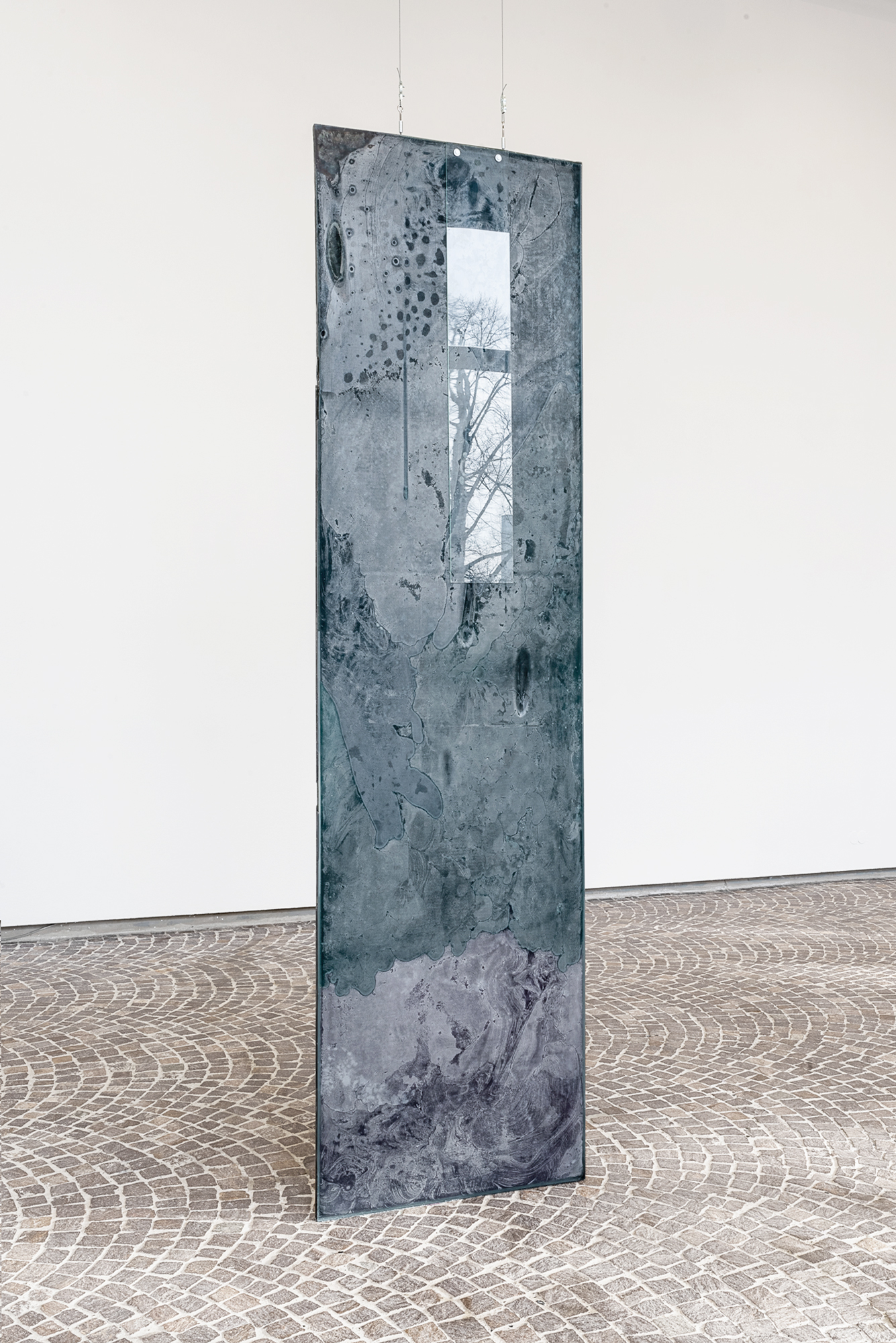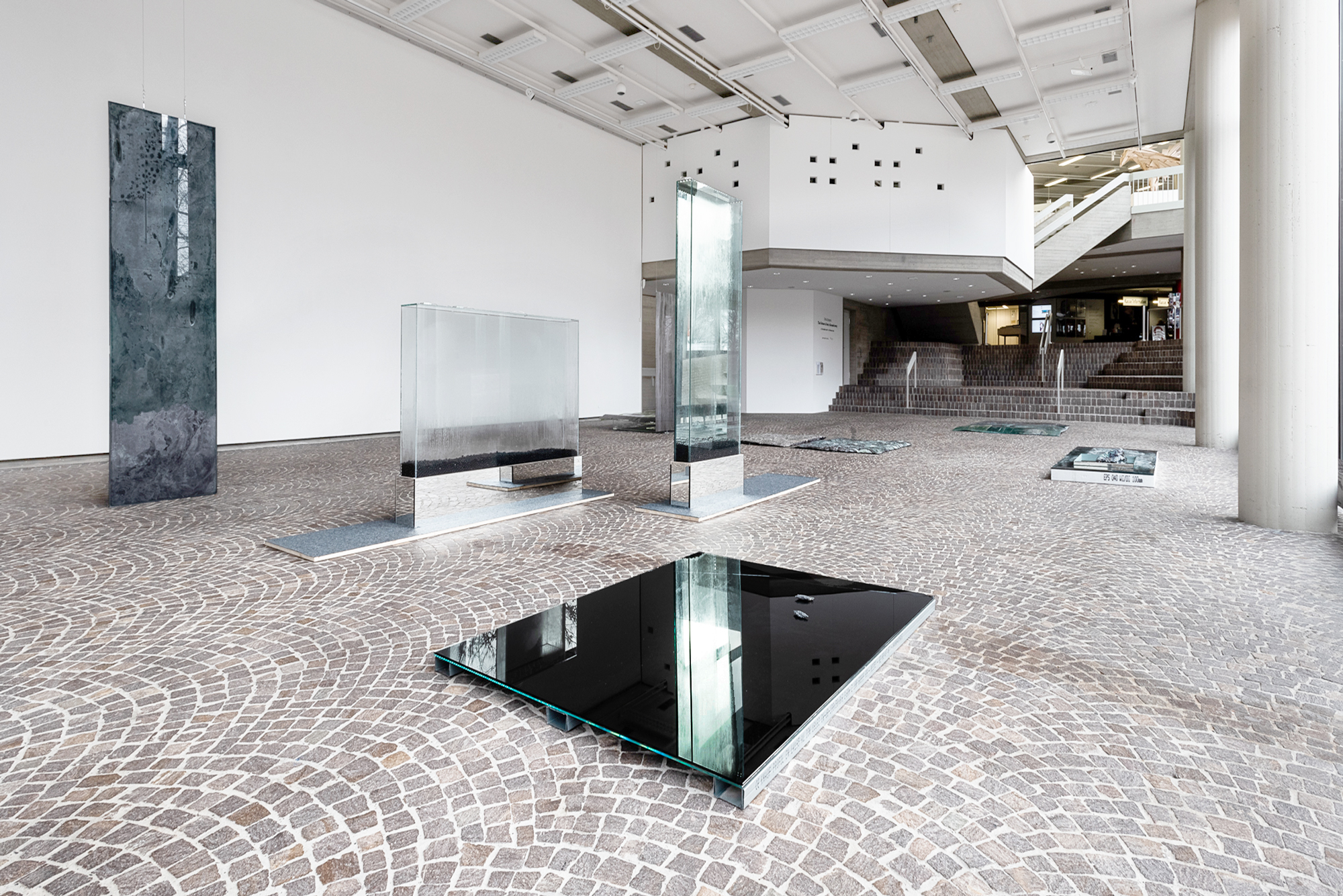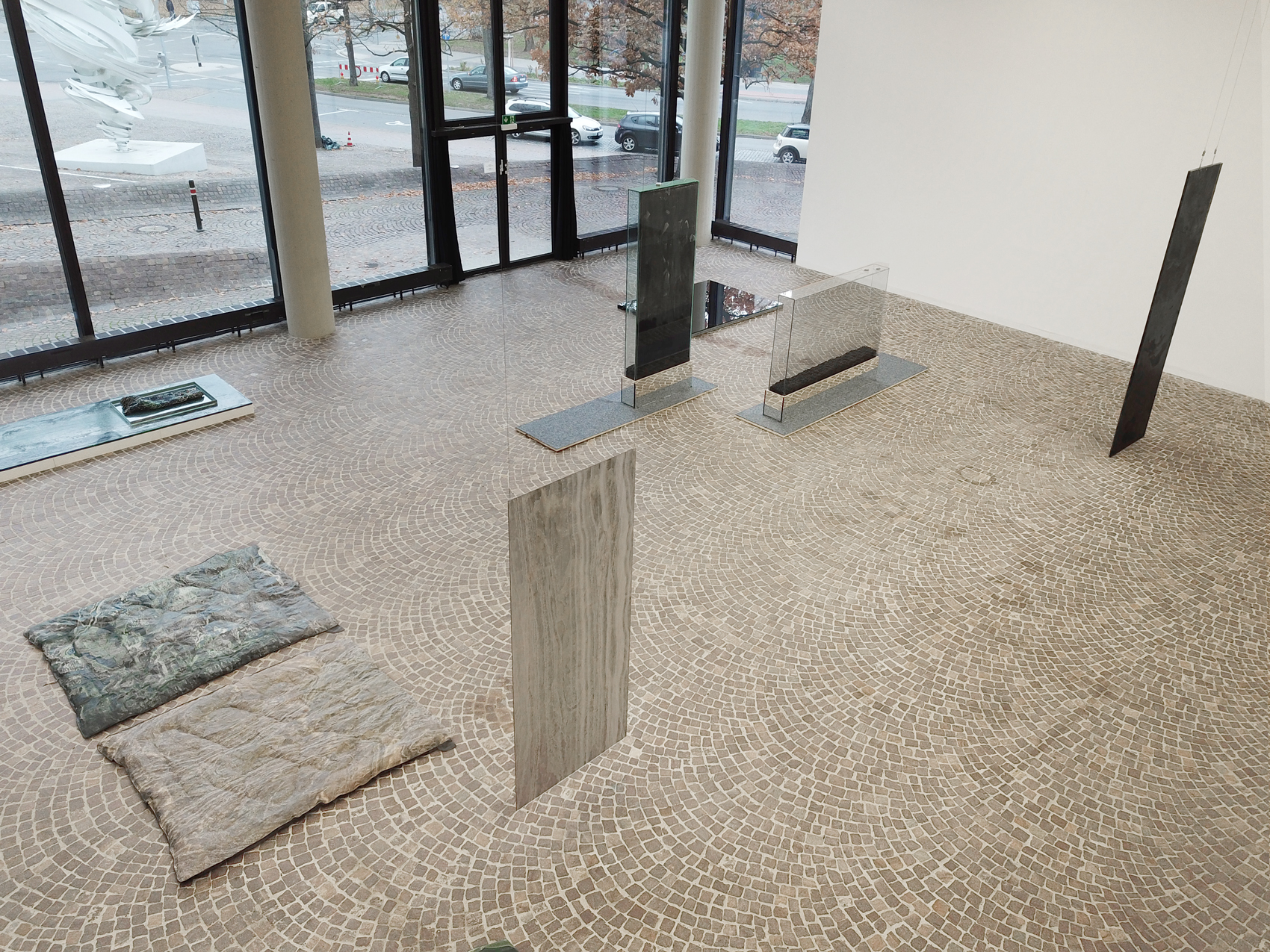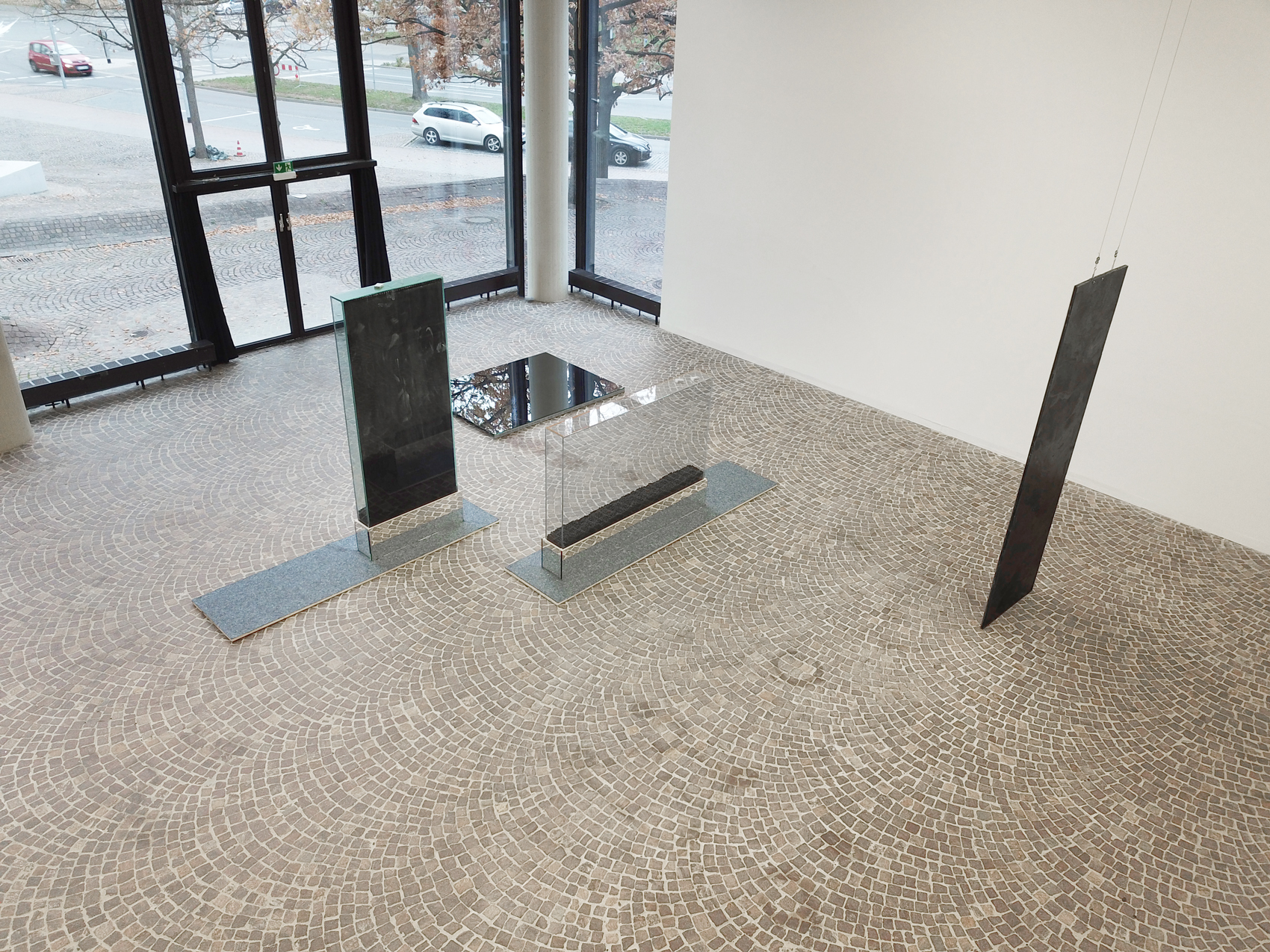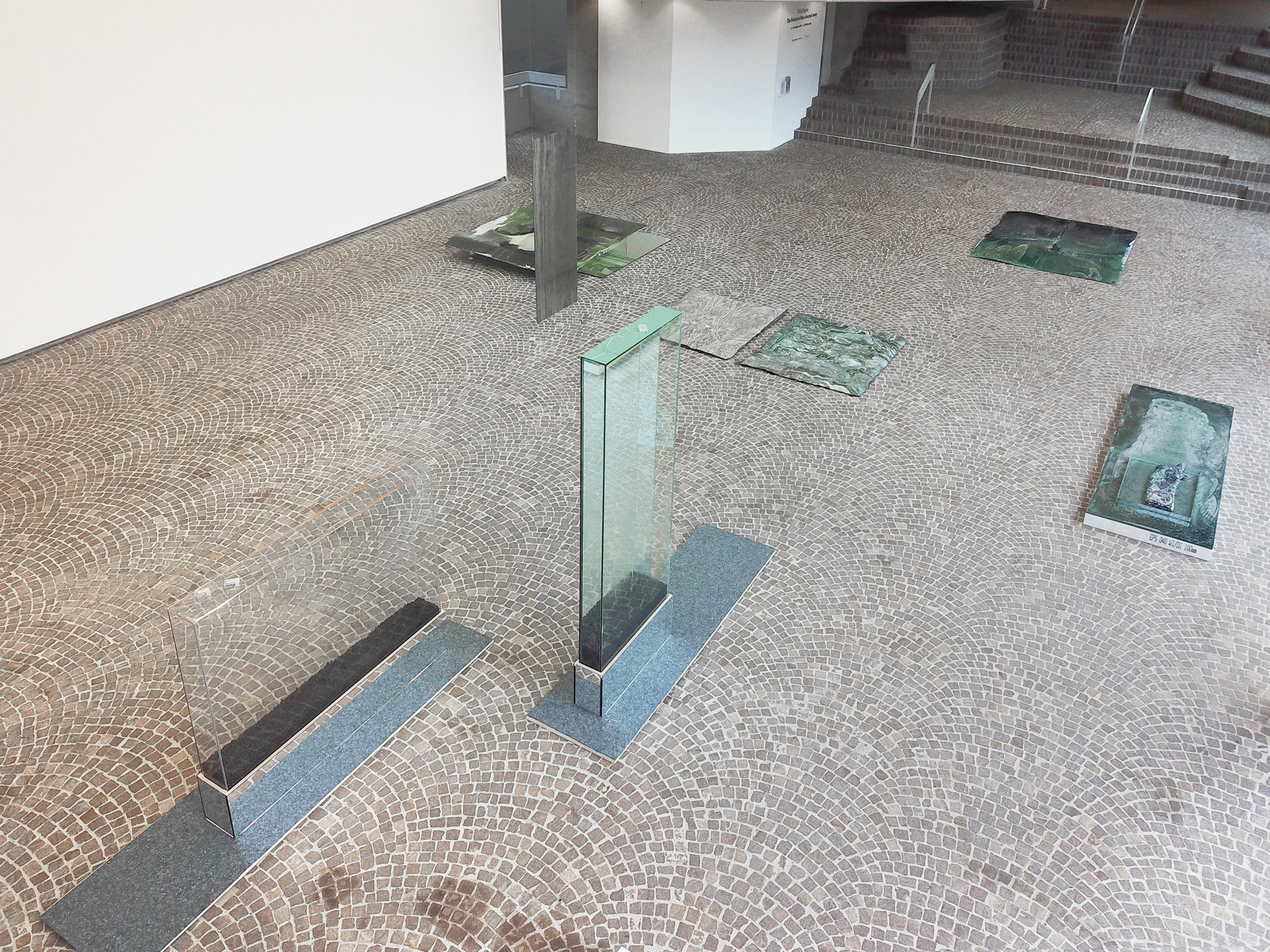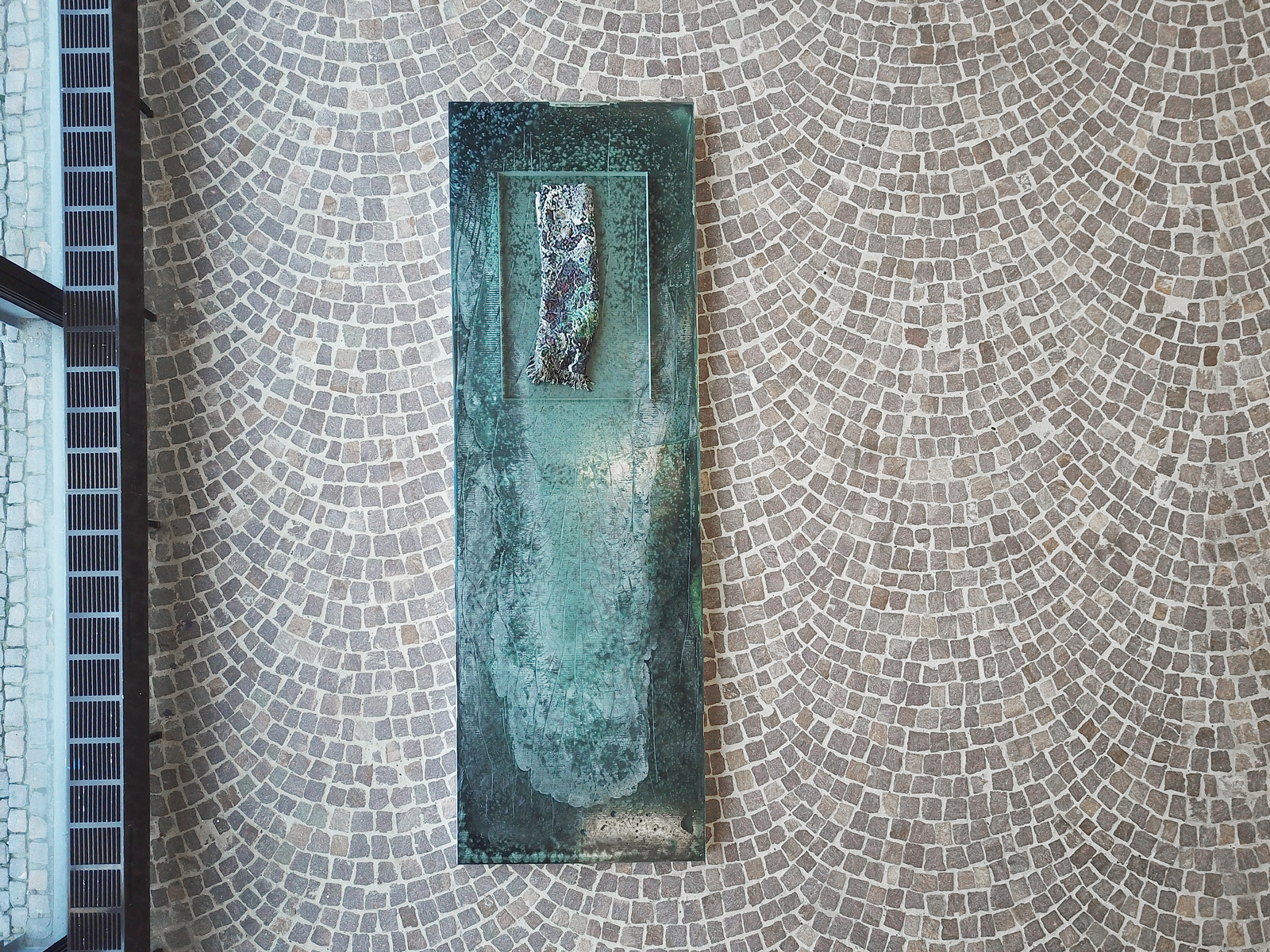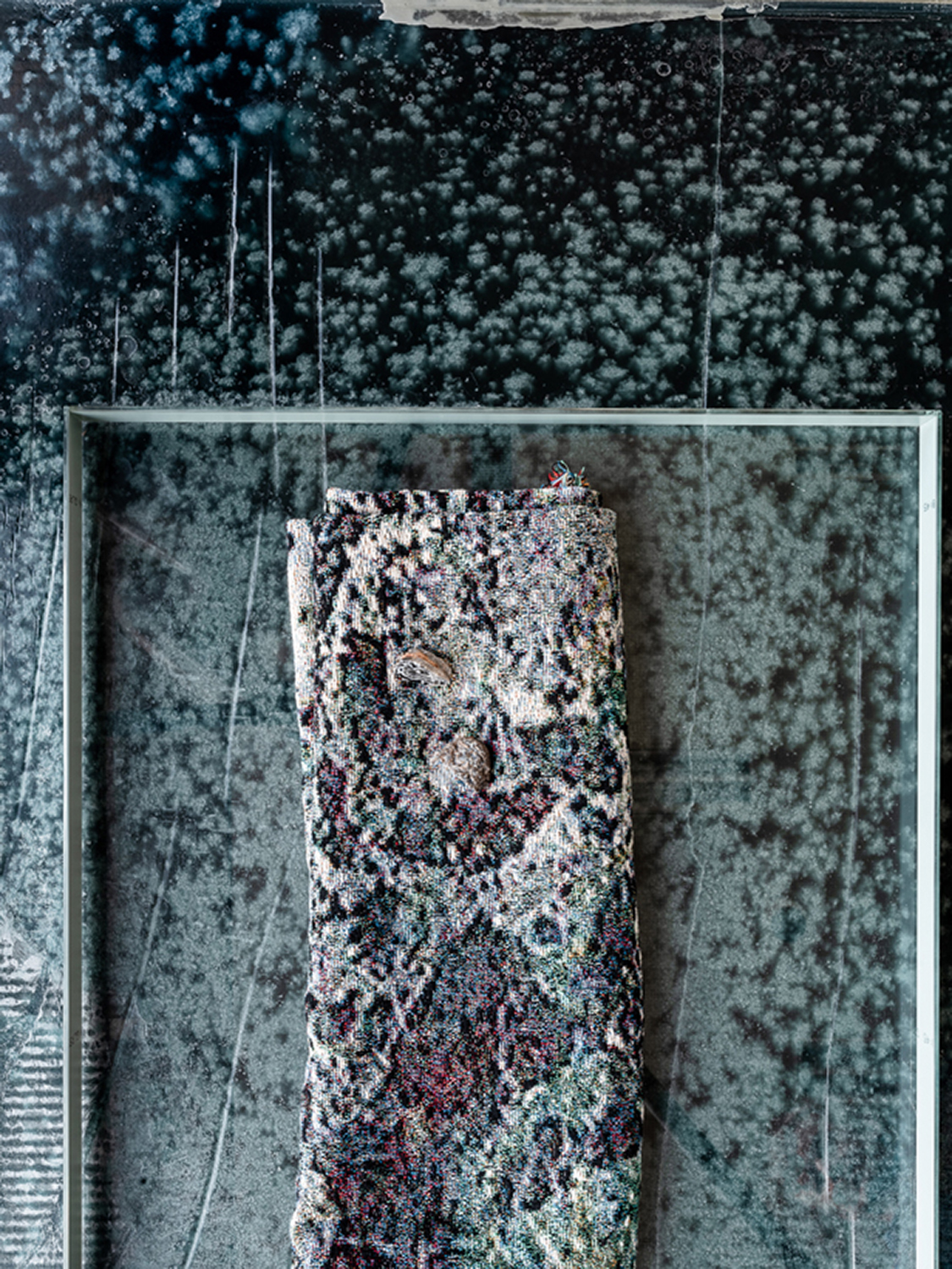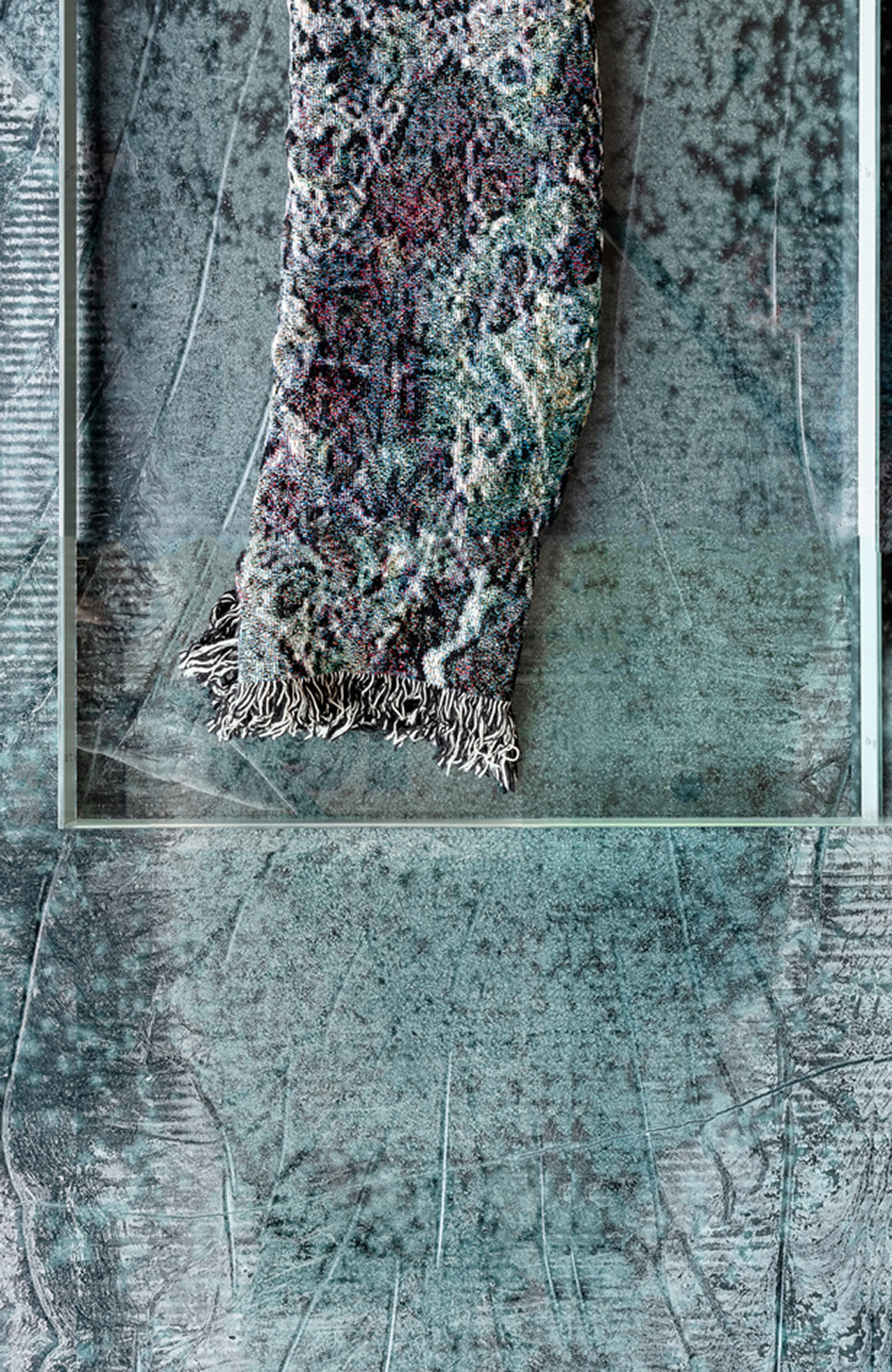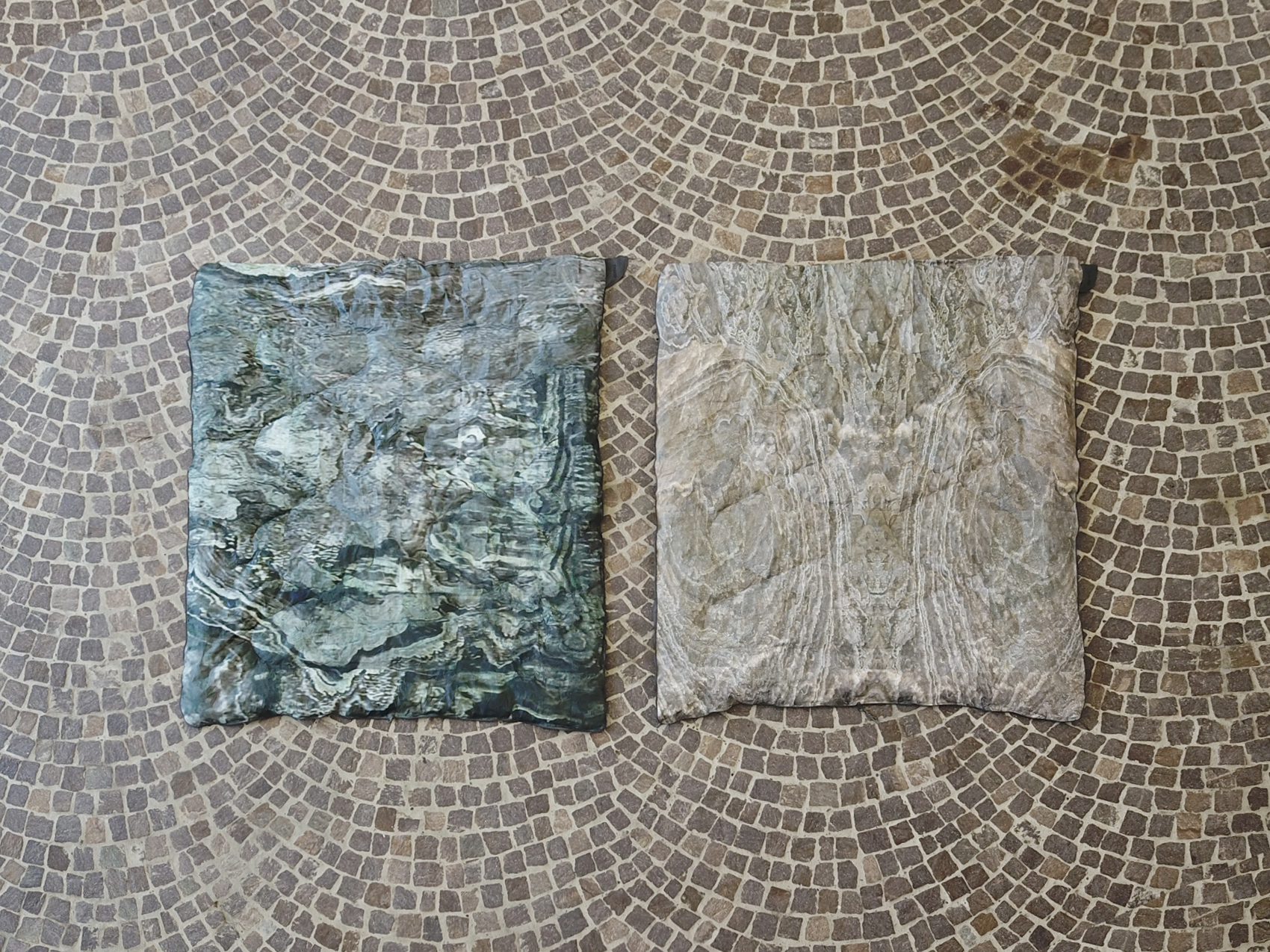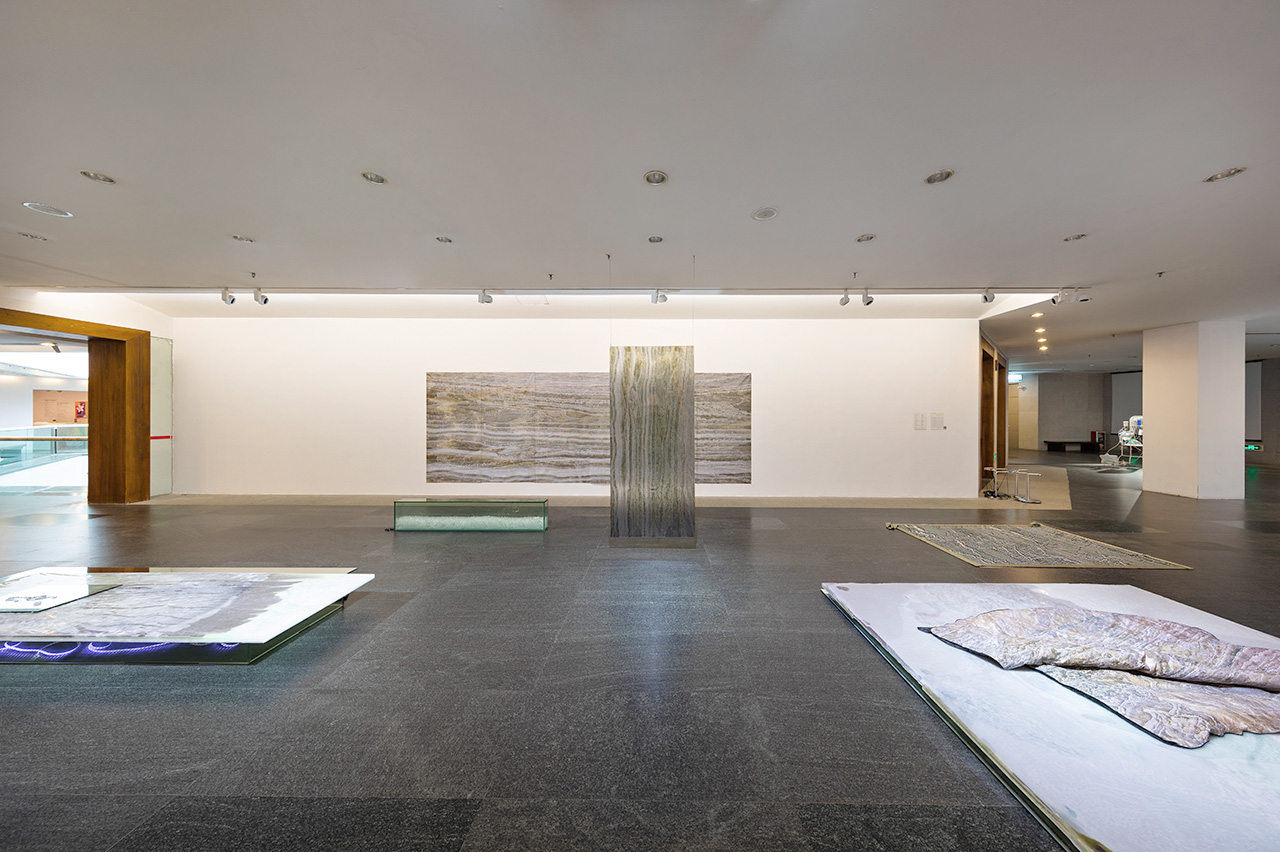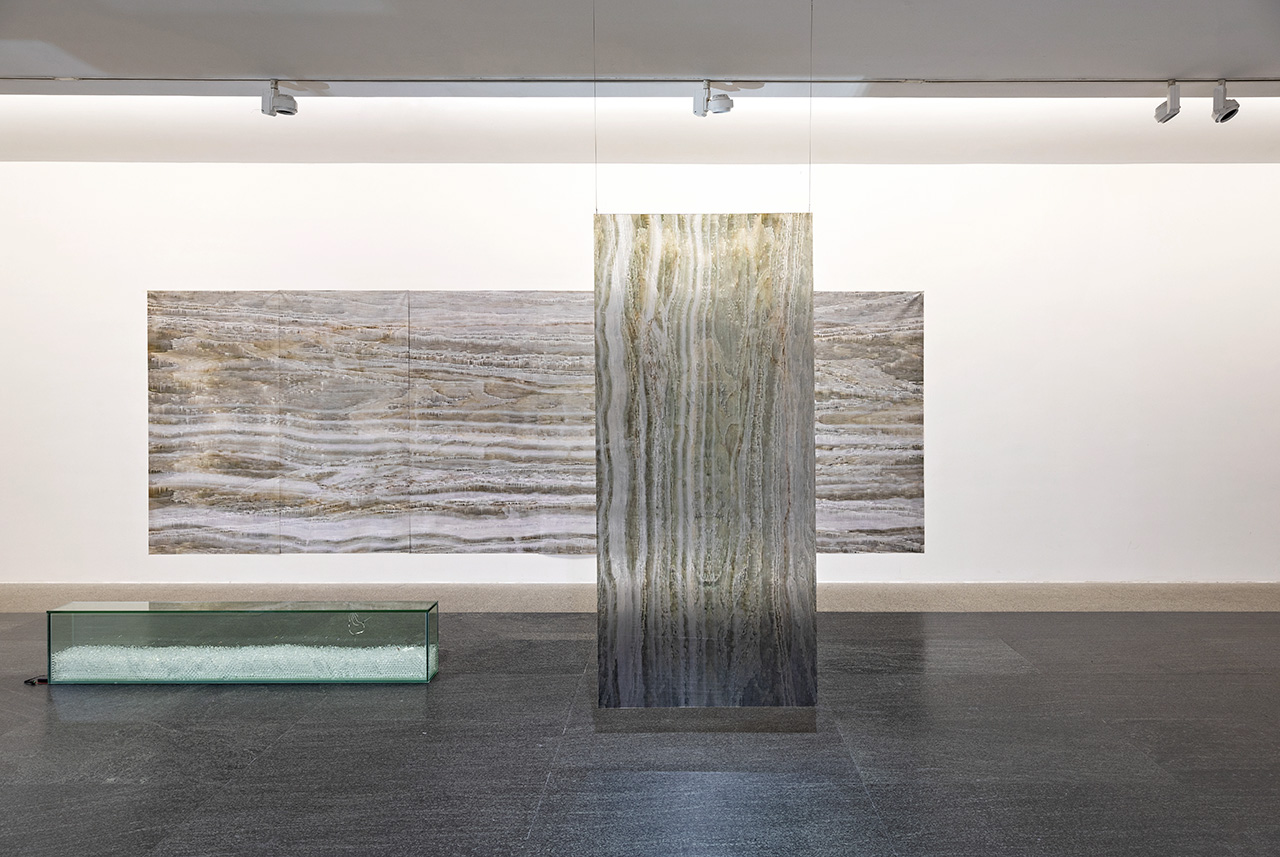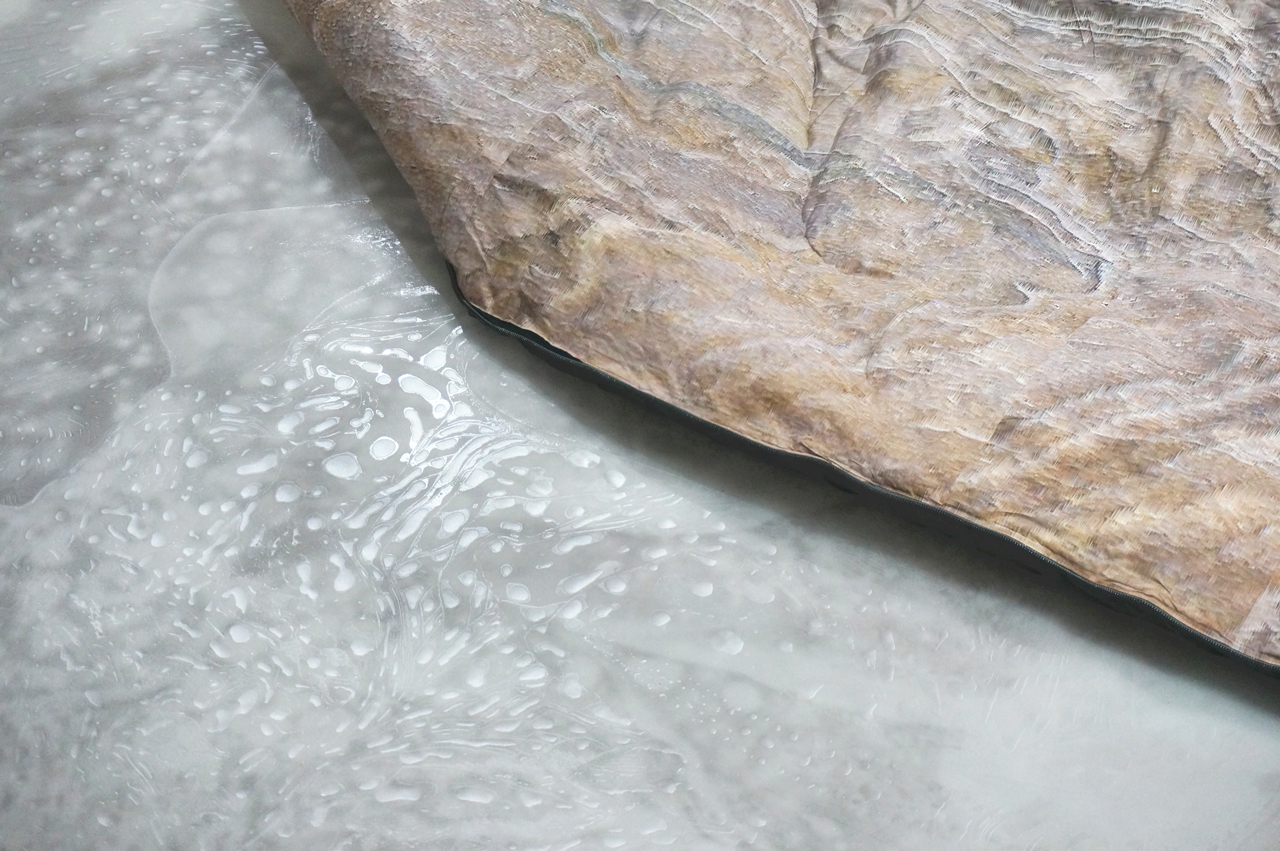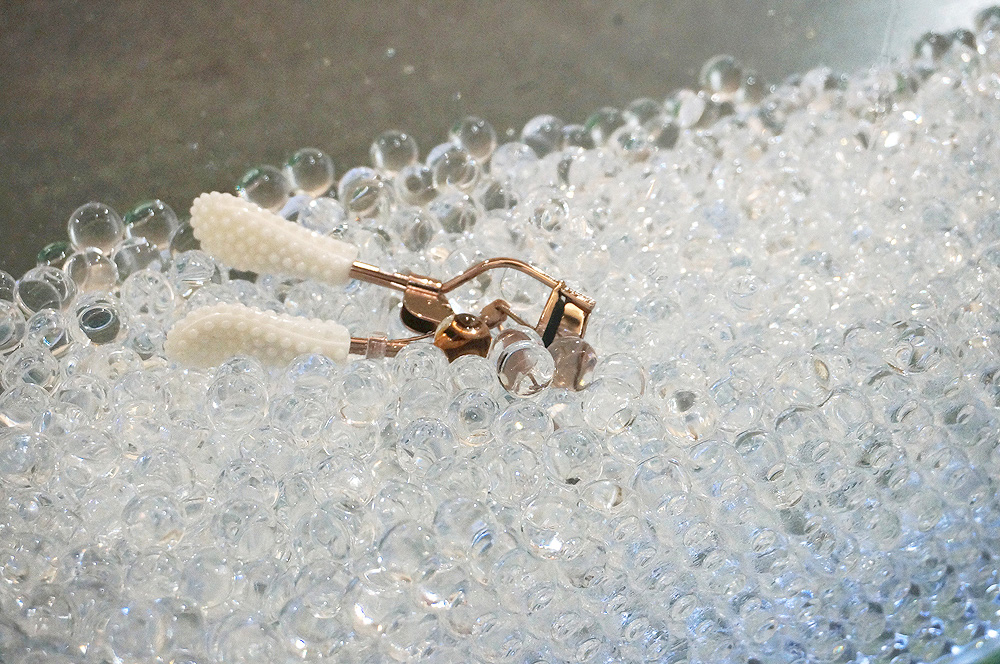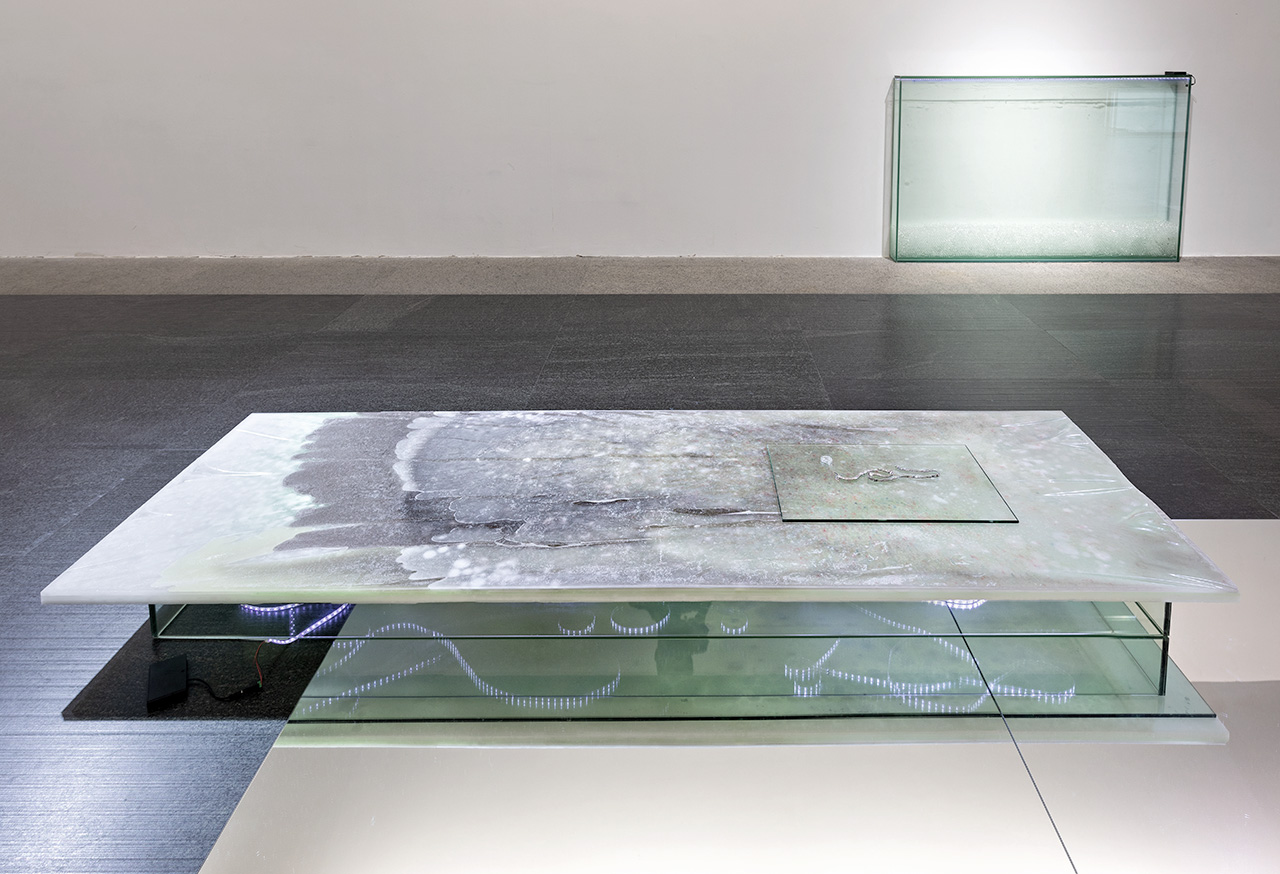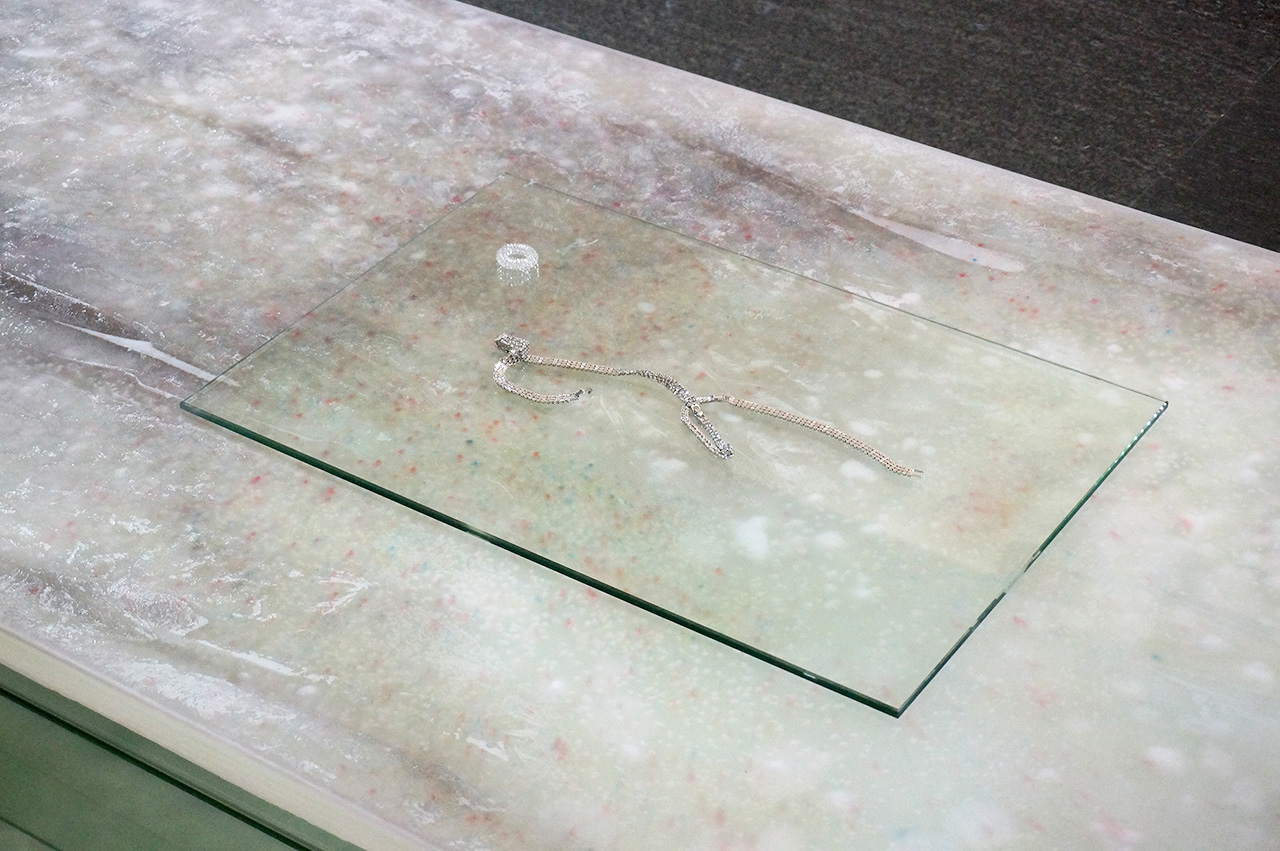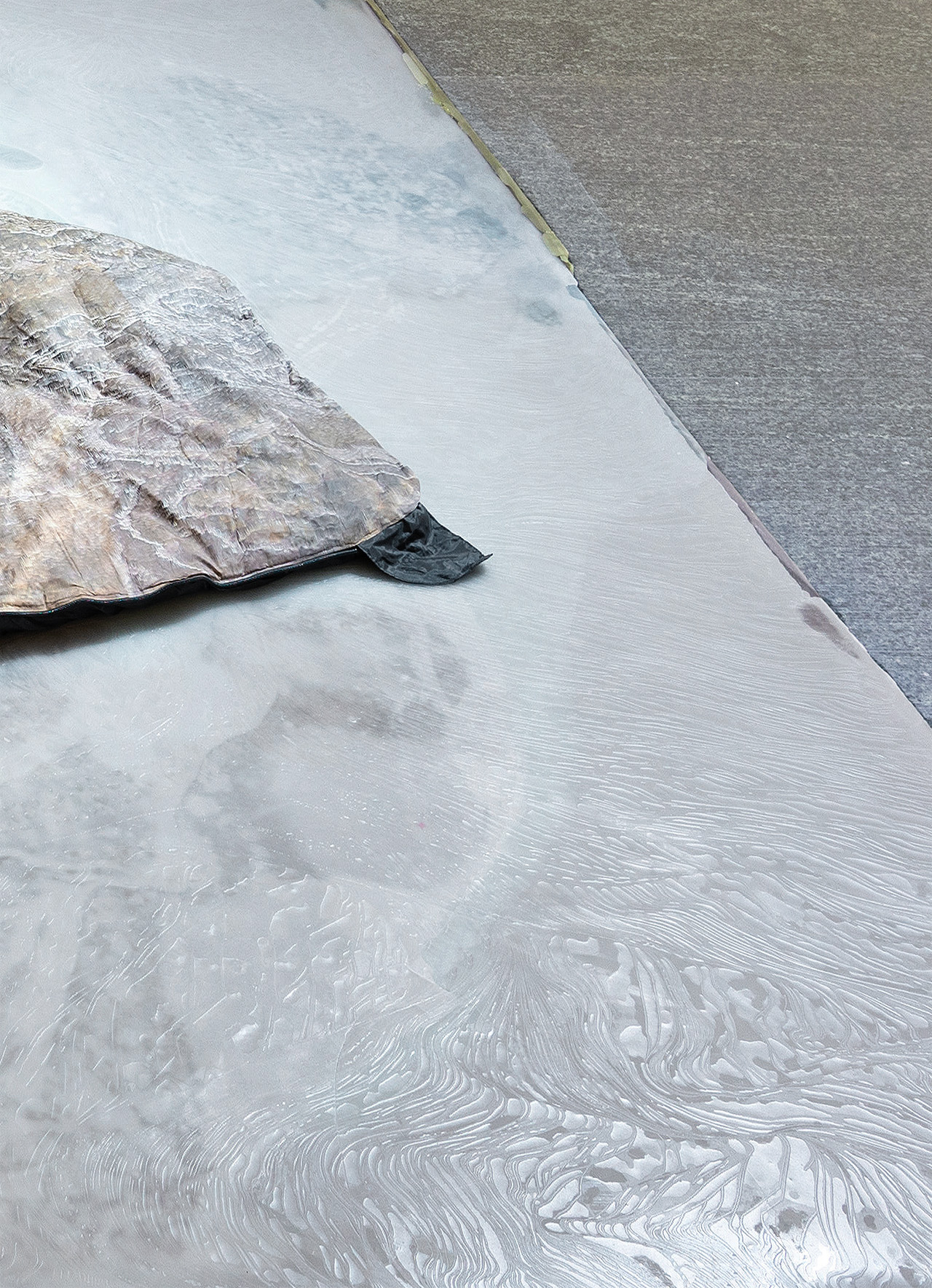The Future is but a Second away
materialization 2018
@ Sprengel Museum Hannover (GER) 2018
photos Herling / Werner, courtesy the Delia Jürgens
Delia Jürgens: The Future is but a Second away, 2018
According to the rhetoric of modernism, the conditions of painting have been questioned repeatedly. The canvas overcame its function as artificial border, the genre-based painting was declined and concepts became images. The picturesque-installative works of this year's Sprengel Preis winner Delia Jürgens nourish from that art historical narrative. With the Modus Operandi of the post-internet generation, and the quite natural use and manipulation of images from the World Wide Web and out of the traditional painting, Delia Jürgens layers virtual images and diverse materials on each other. She creates hybrid structures of analogue and digital realities, which openup polyvalent spaces and meanings. With a modular form of work - of situational, constantly rearranged materials, the artist establishes an aesthetic nomadism.
In the Einblickhalle (insight hall) of the Sprengel Museum Hannover, the artist explicitly explores the changing situation due to the temporality of light, material and perception. The eight positions of The Future is but a Second away belong to the group of works Fragmented Landscapes. These minimalistic installations consist of fragments of an open structure that occur repeatedly in new constellations as soon as the viewer moves in the roomspace. Due to their composition, partly flat positioned on the floor, partly vertical hanging in the room, they trigger associations of landscapes. This specific relationship between inside and outside is enhanced by the large window front and the numerous reflections in the mirror and glass surfaces, which to a certain extent describe a zero point of the pictorial. Due to the strong reference of the space to the environment, the positions act like pixels or fragments of the environment itself.
The artist uses a variety of materials from different contexts. Styrofoam is an opaque layer; a cheap mass-produced good that is both omnipresent and invisible in everyday life. The carpet and the sleeping bags are hi-tech fabrics that are printed or woven from edited image-data of rockstructures. The data comes from the Internet, an almost infinite image database, which can be accessed at any time and Delia Jürgens speaks of the deconstruction of these stereotyped images. The shape of the paraffin changes with the temperature fluctuations of the time of the day.
The Aqualinos (water-storing pearls) act as a permeable membrane. Their evaporation changes both climates, in the glass boxes in which they are stored and in the roomspace. Like in a painting, Delia Jürgens composes the various materials upon each other and in this way adds the level of transparency to the colors and haptics of an artwork. They transform aesthetically into hybrid forms. Each layer gives the work a further level in space and interpretation of virtual and analogous realities. The artist speaks of her works as "materializations": They are transitory consolidations in a dynamic environment whose fragments, through their materiality and references, always point beyond themselves and thus add a perceptual-psychological dimension to the positioning of the self in its environment.
Delia Jürgens studied scenography at the University of applied Sciences and Arts Hannover with Colin Walker (2008-2011) and fine arts at the Braunschweig University of Art with Frances Scholz (2008-2014).
laudatio backdrops booklet
@ Guangdong Museum of Art Guangzhou (CHN) 2018
photos 广东美术馆, courtesy Delia Jürgens

